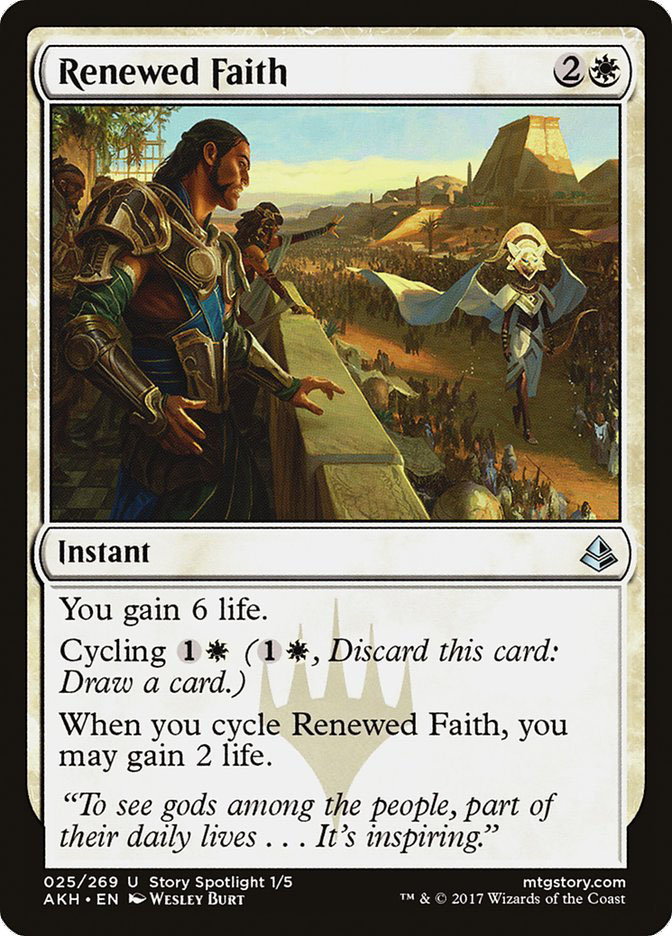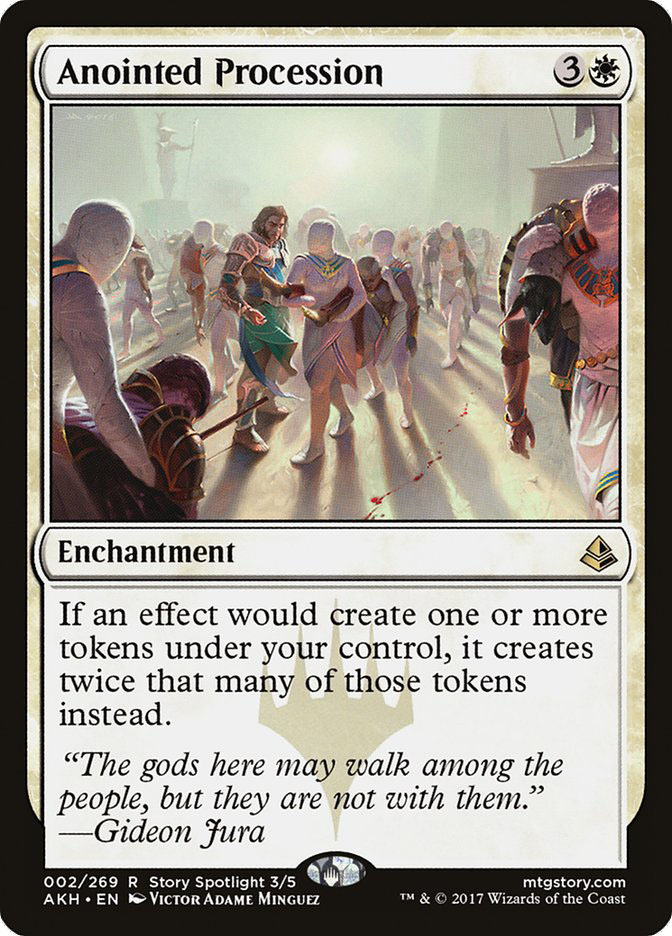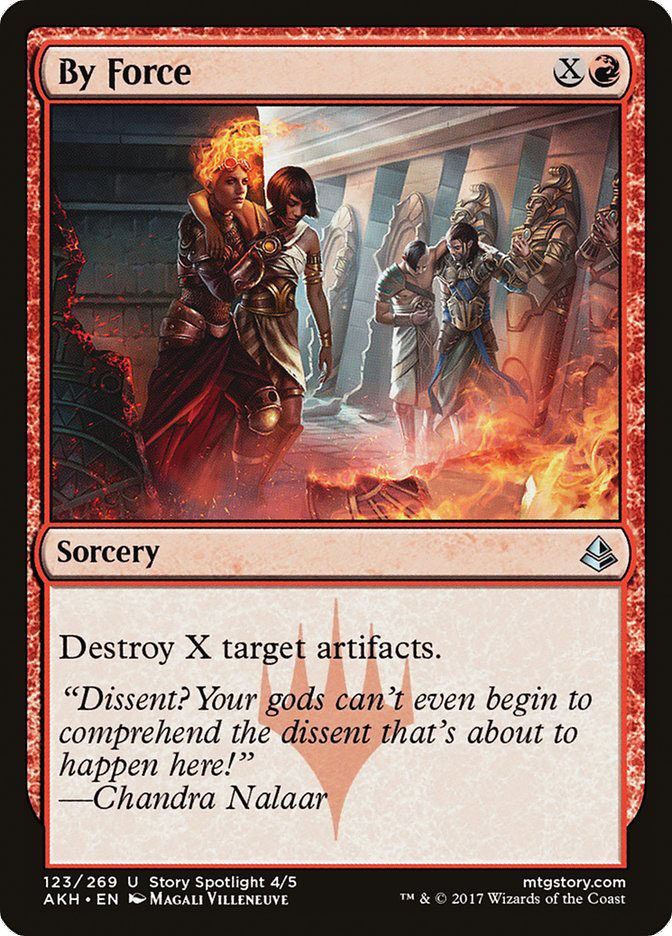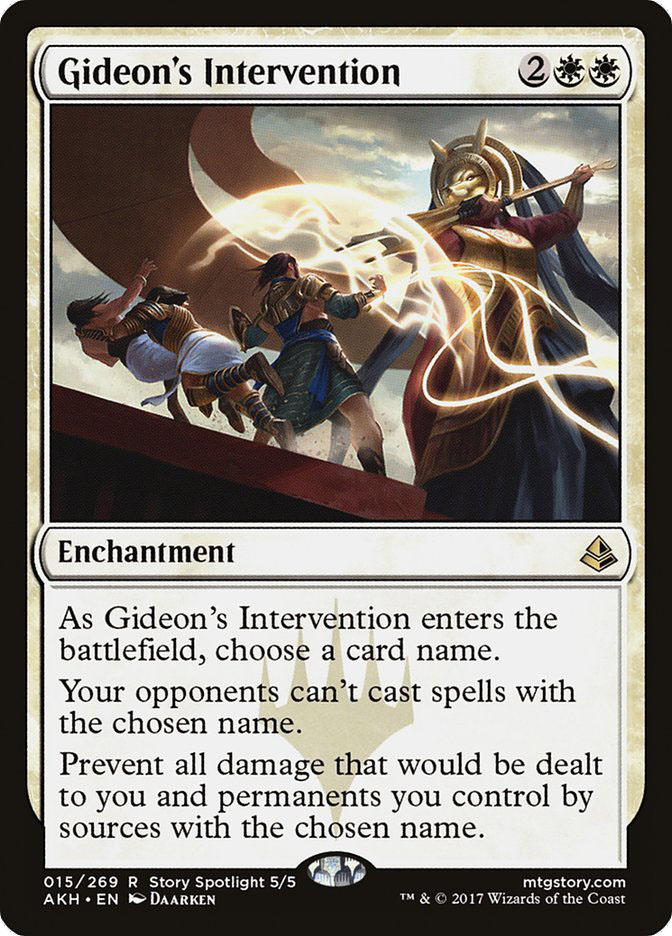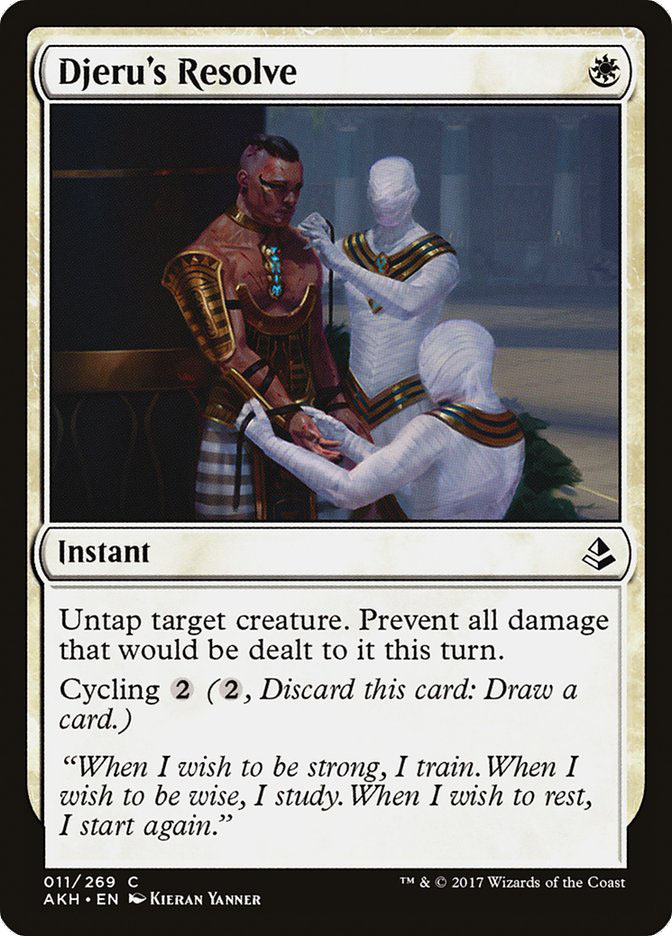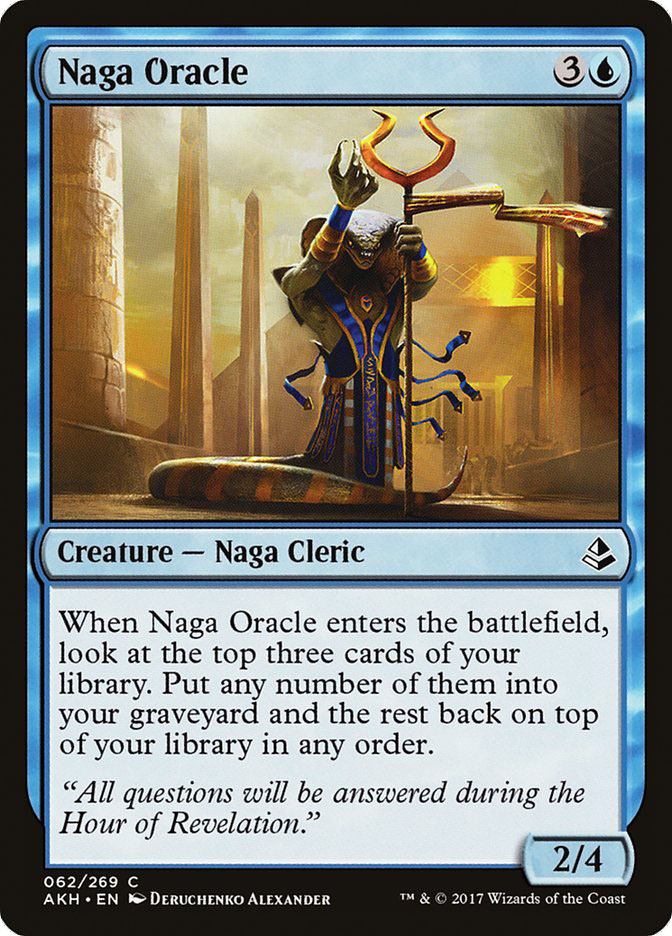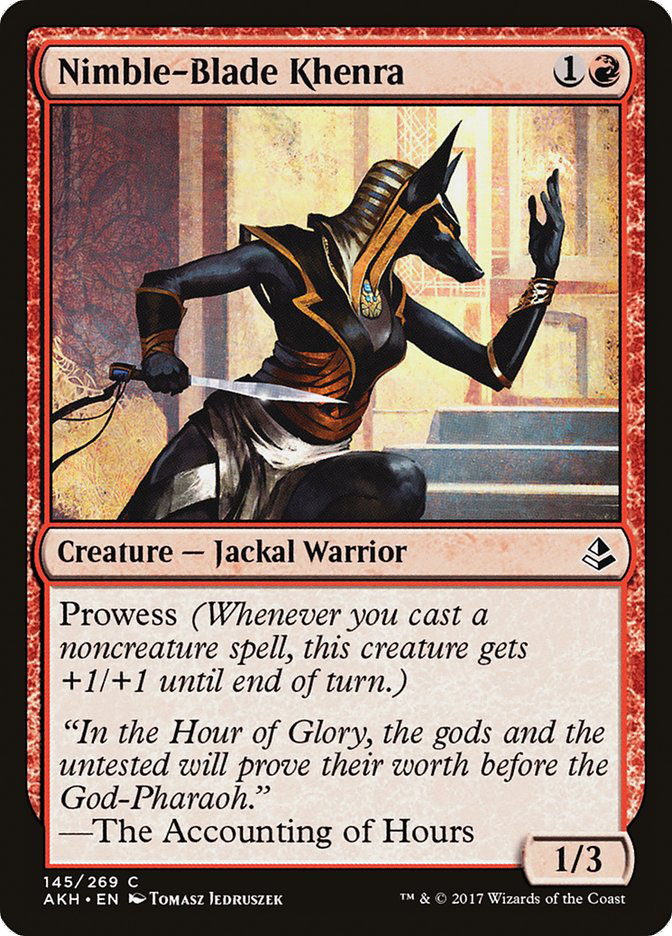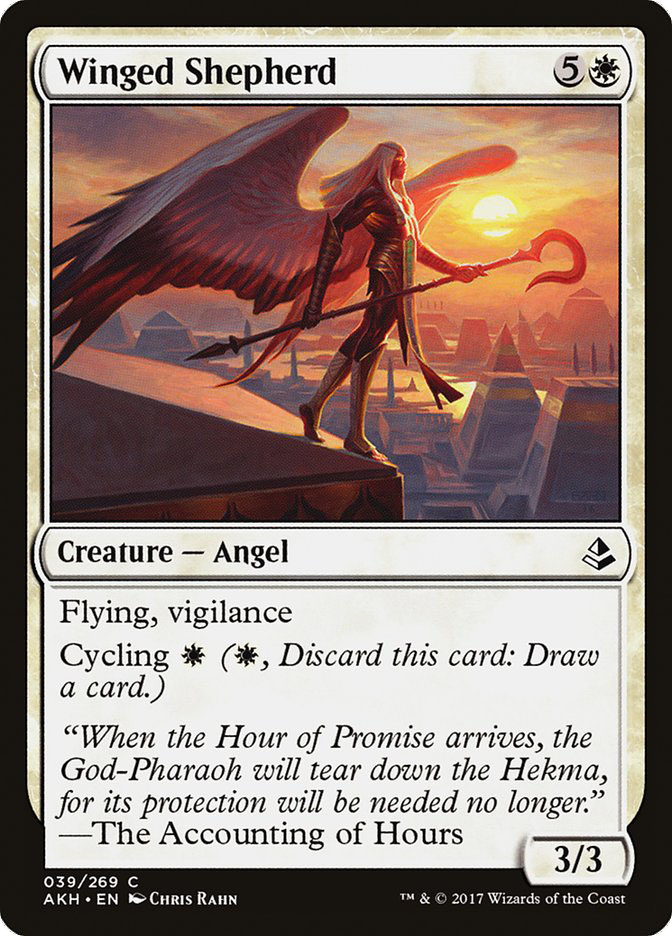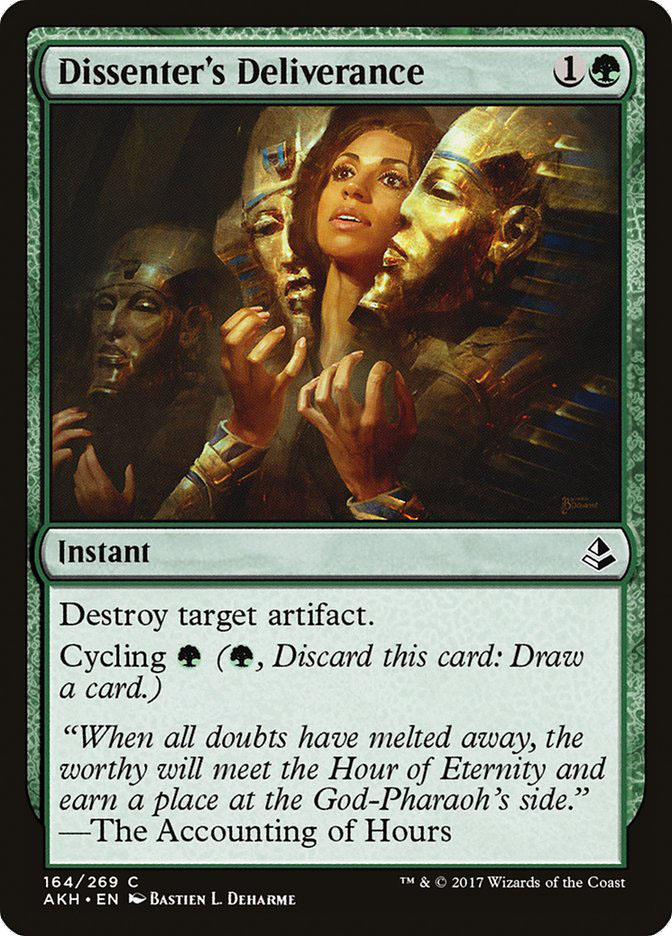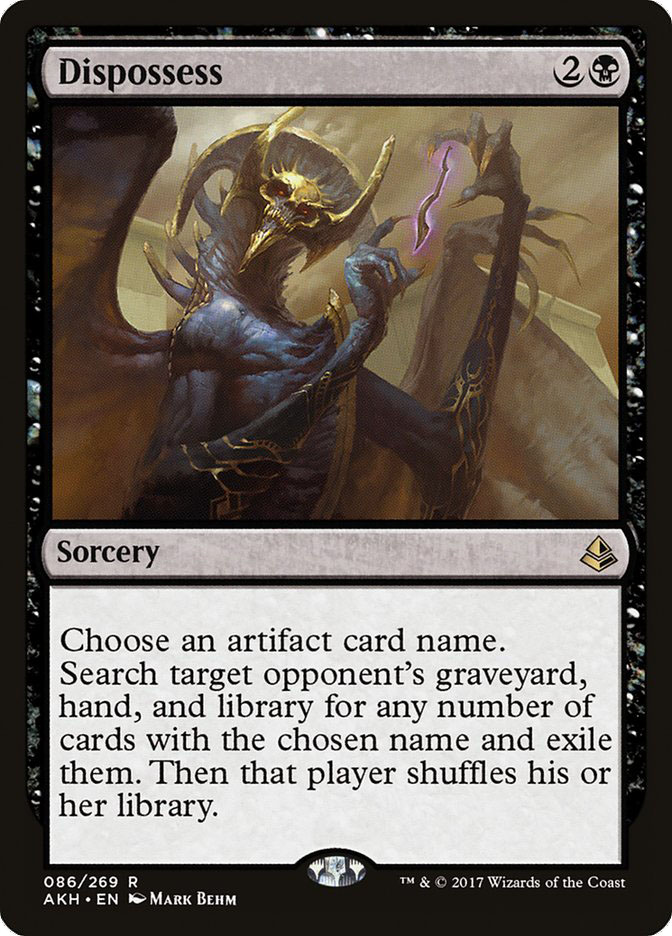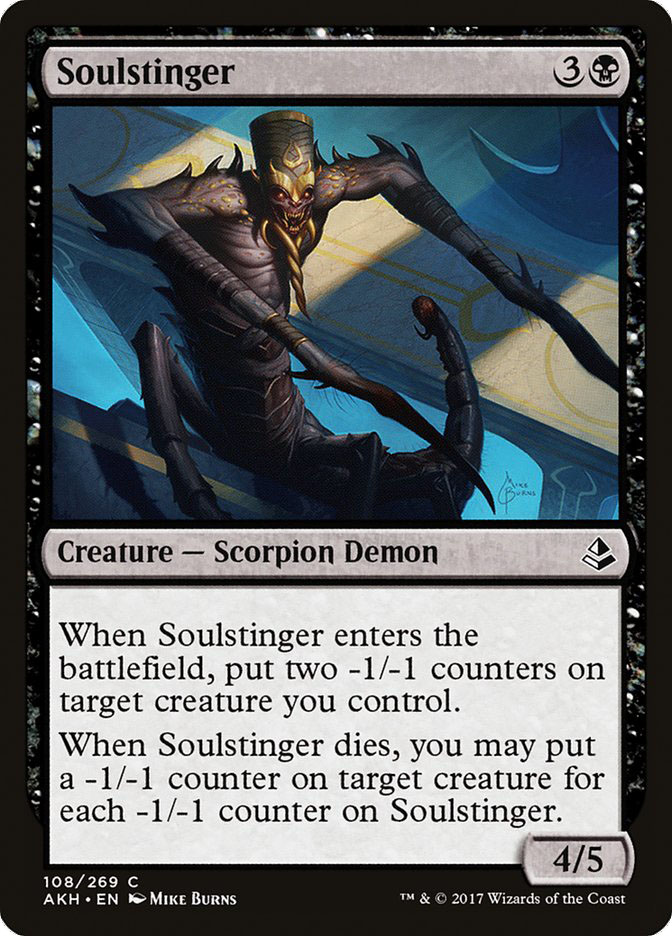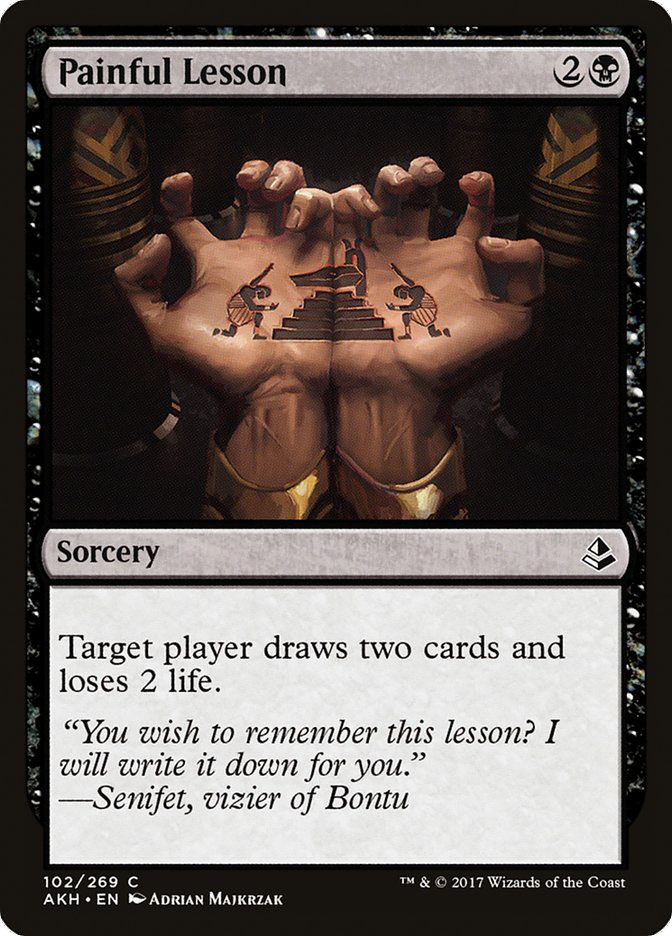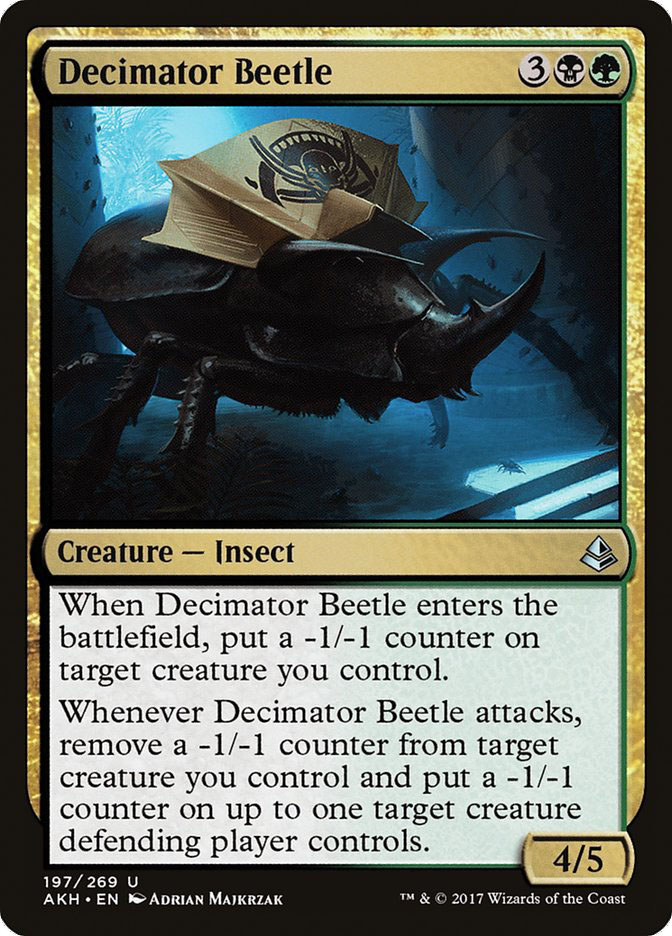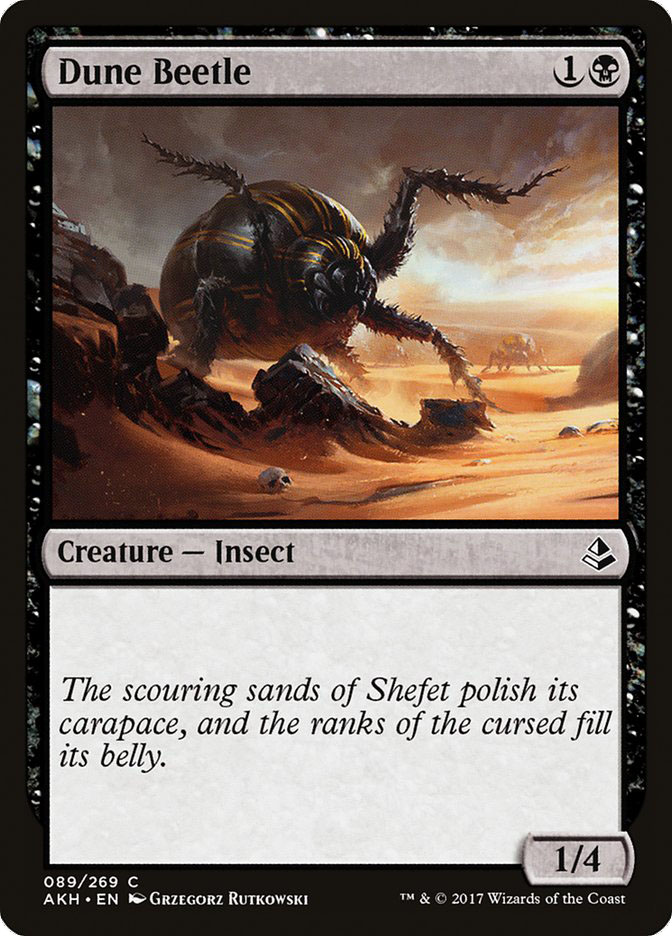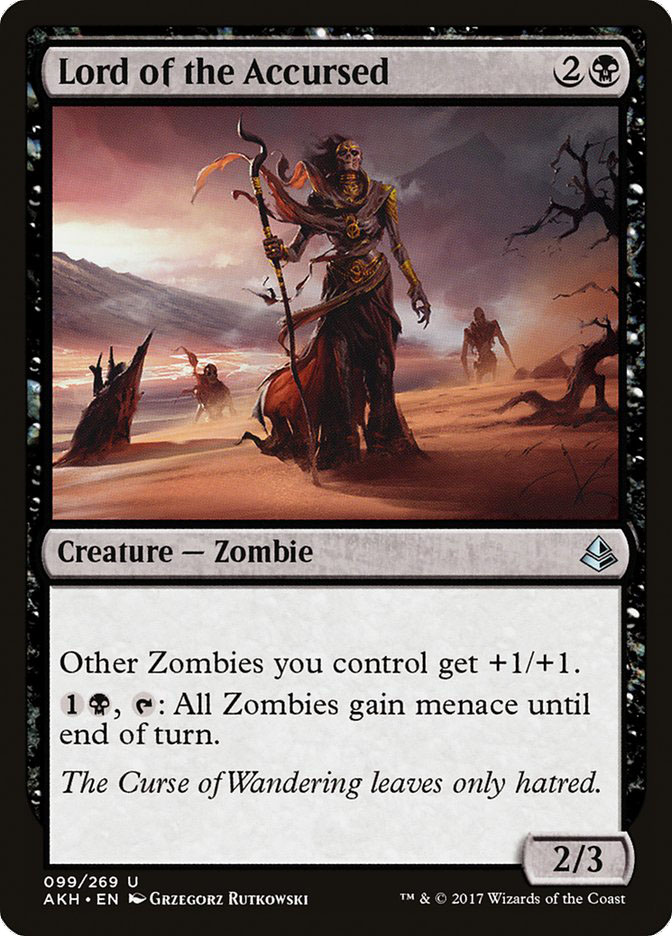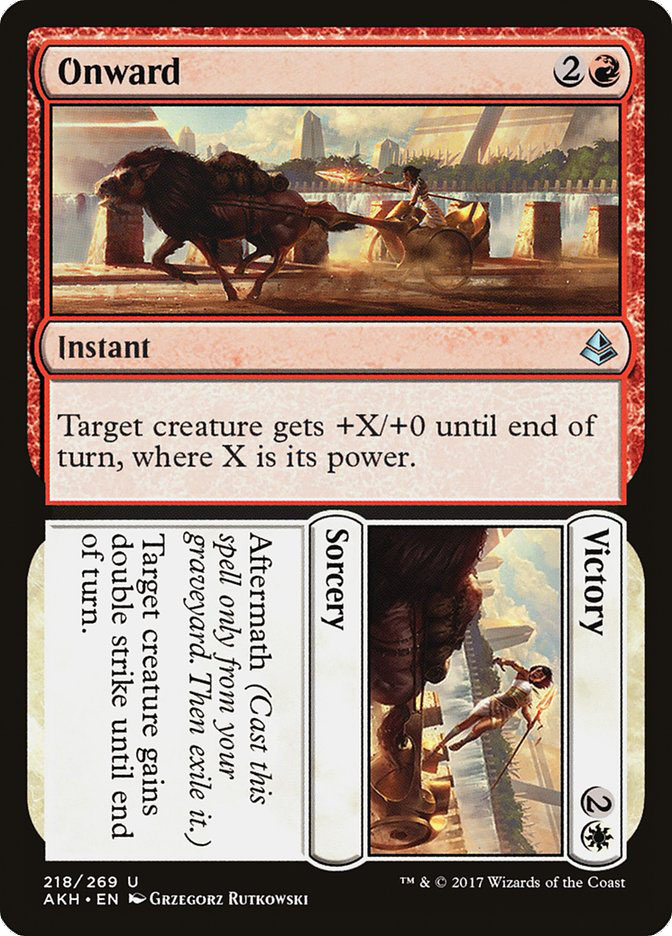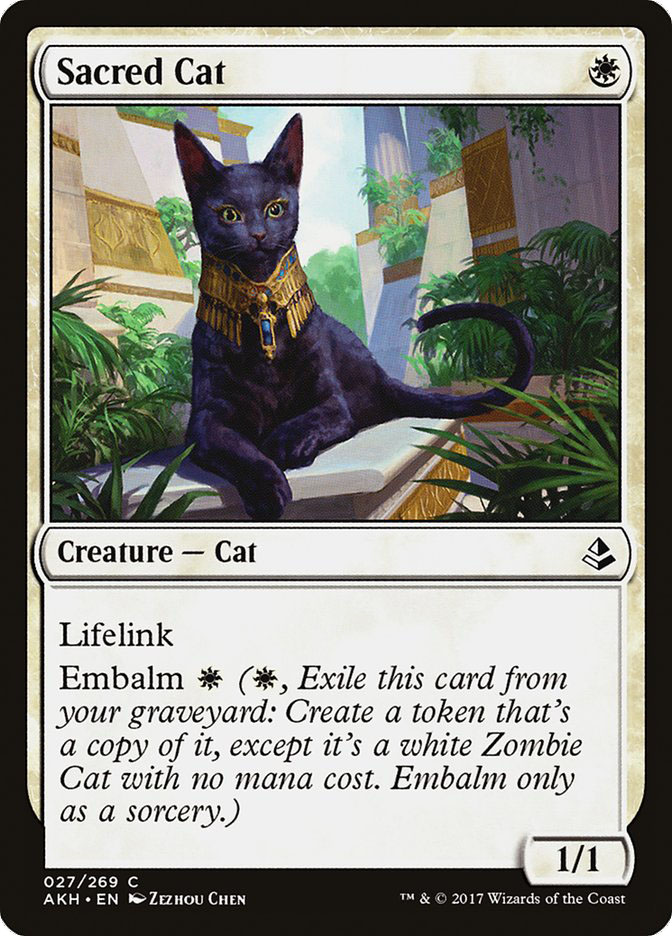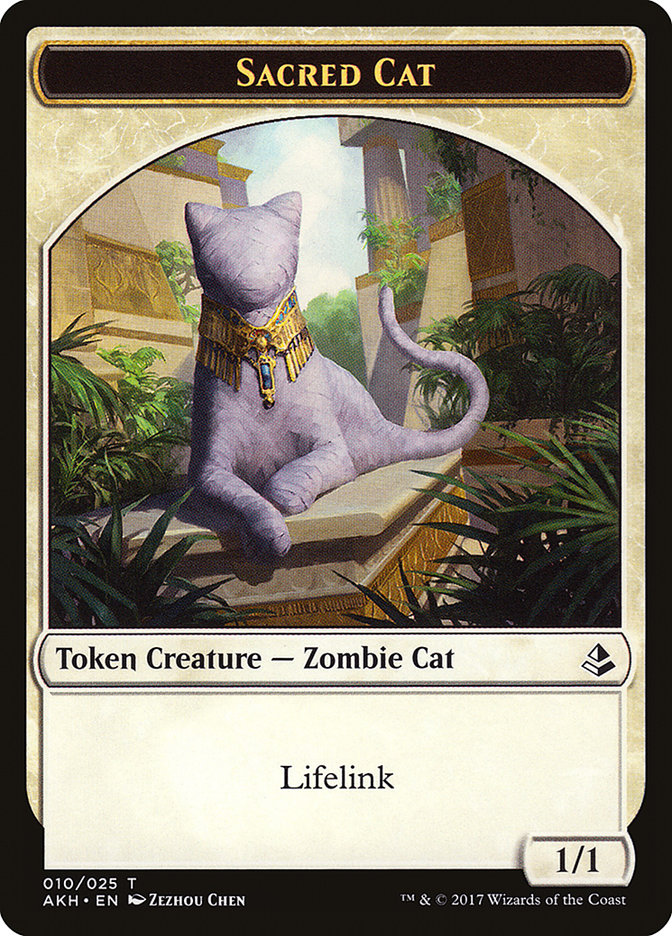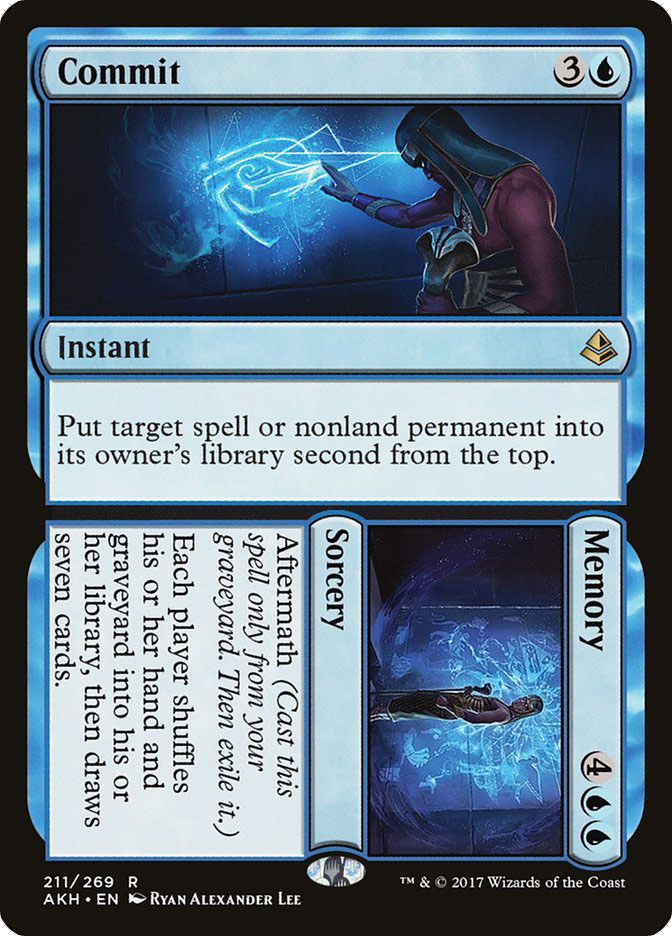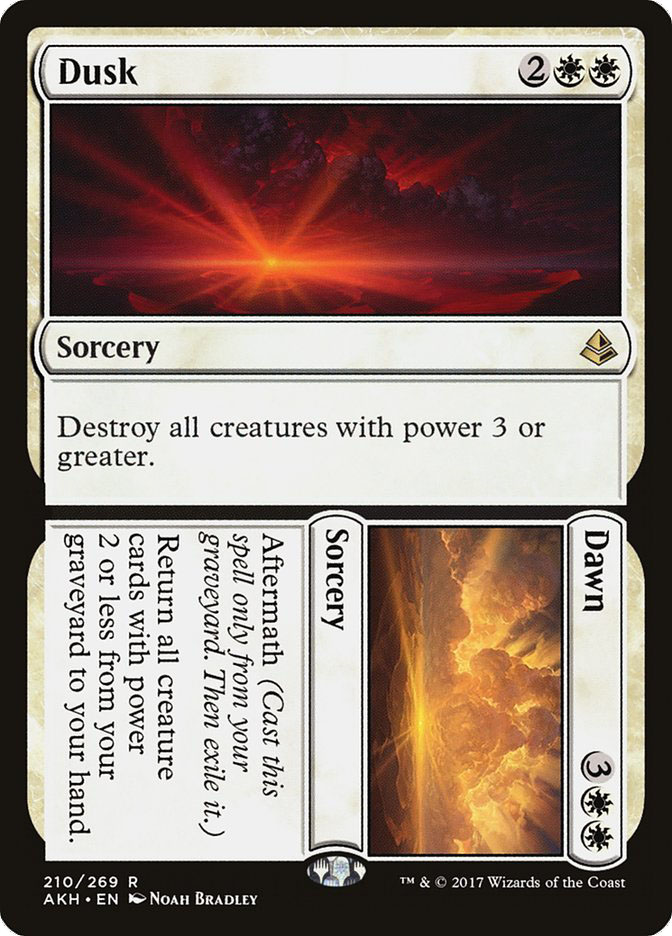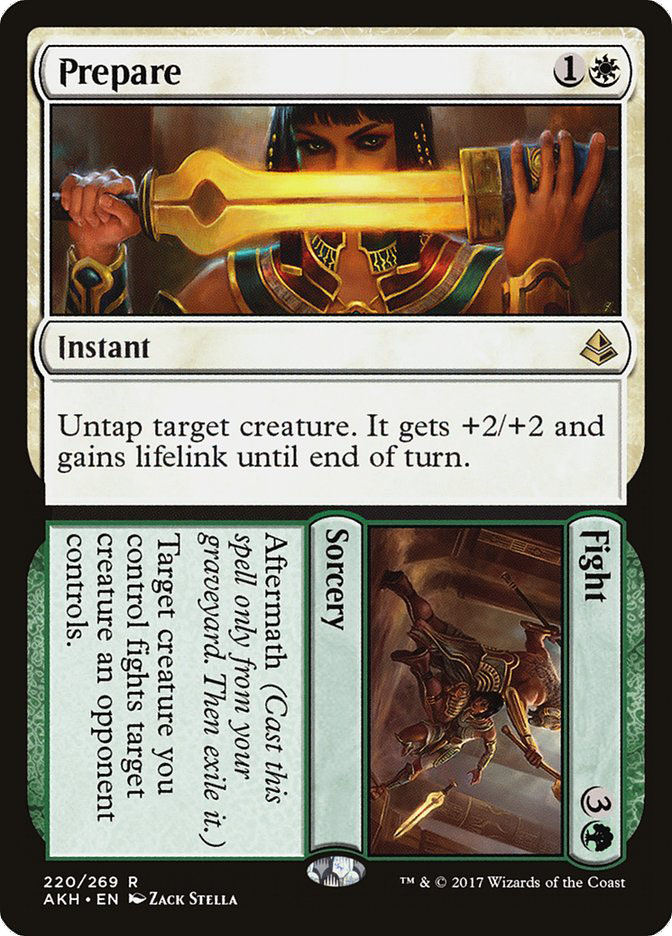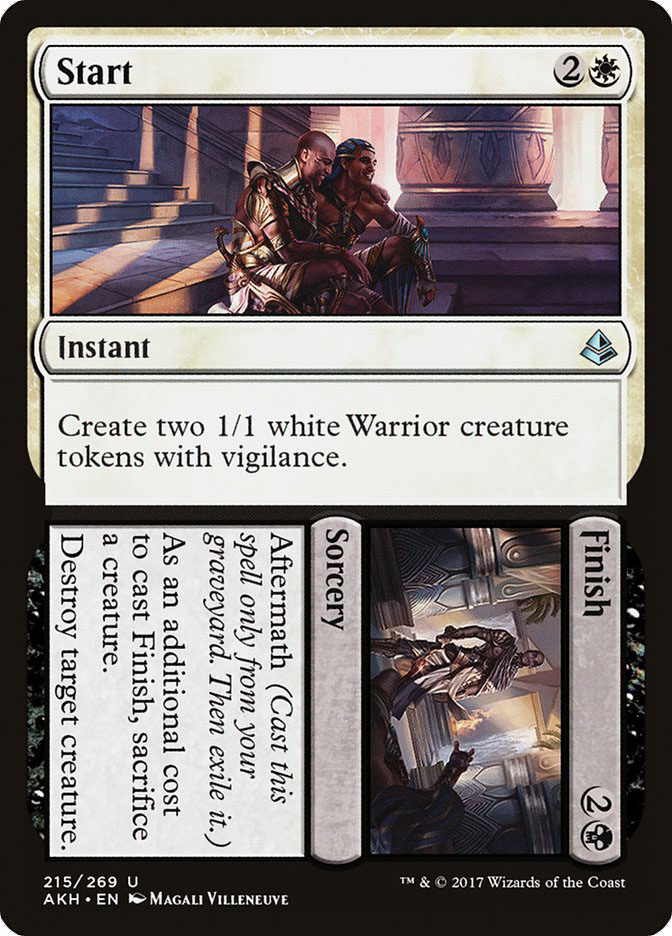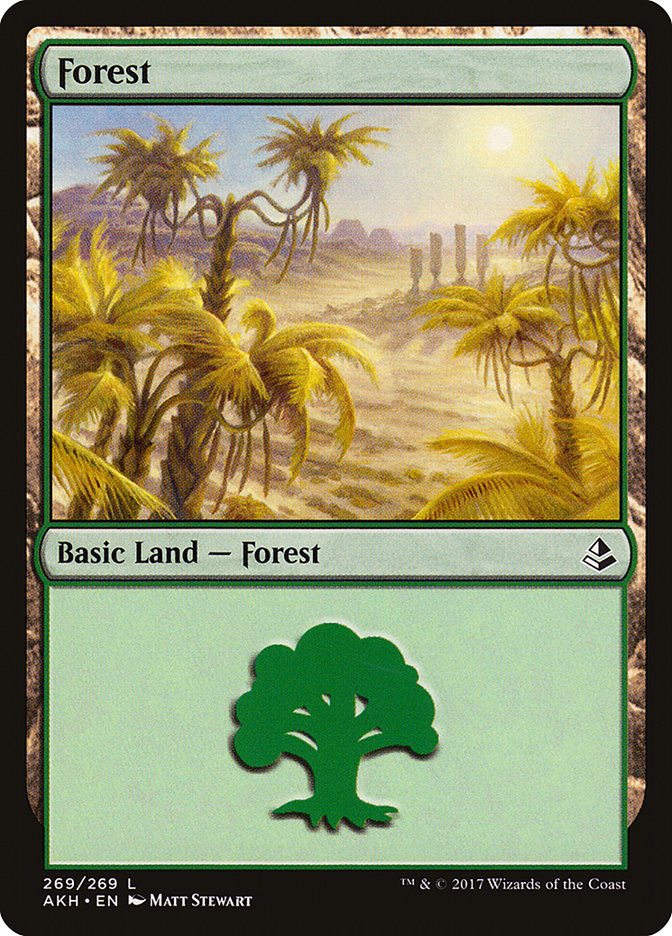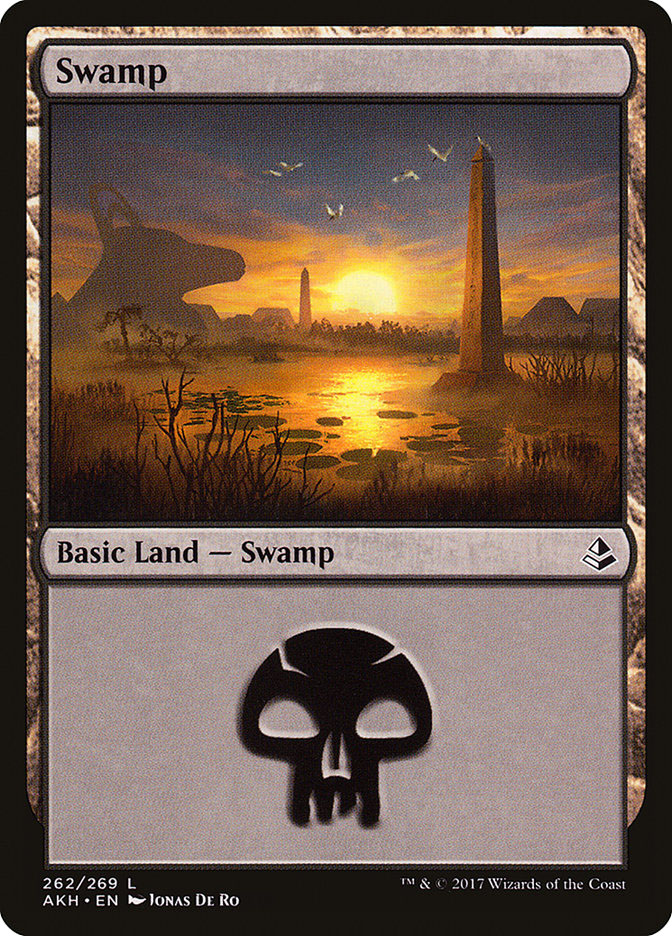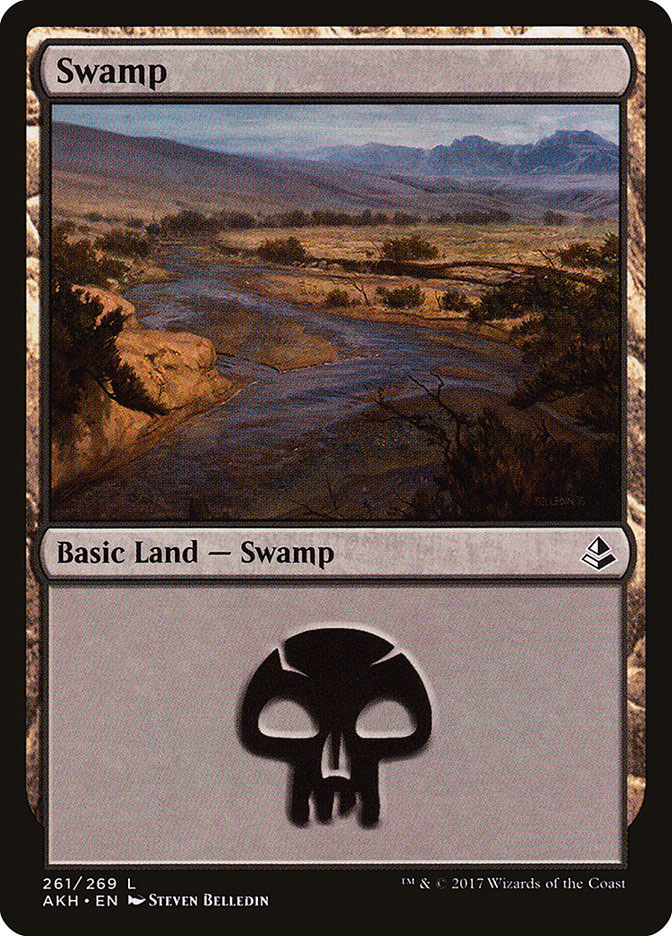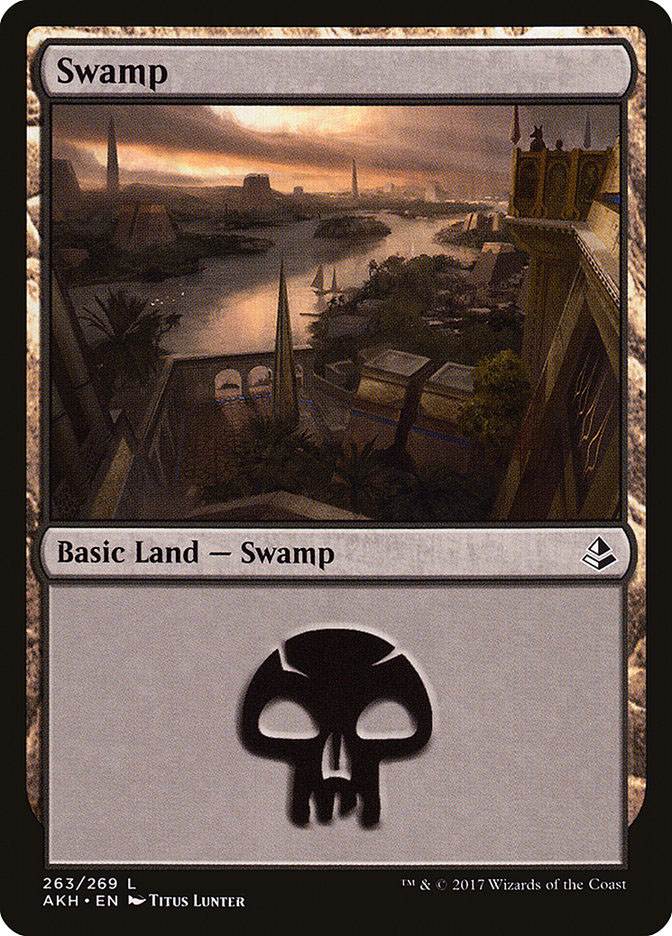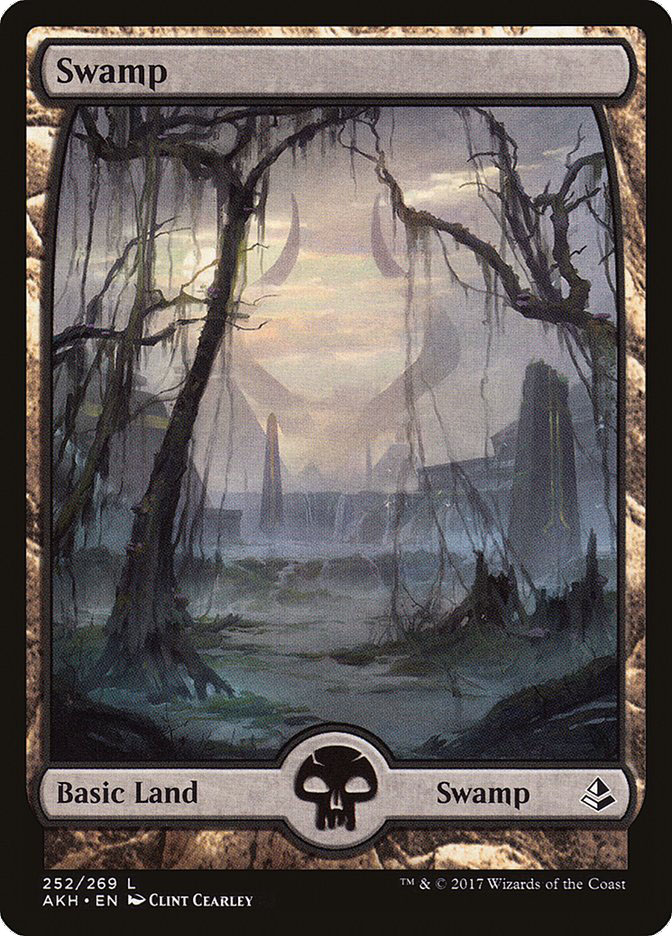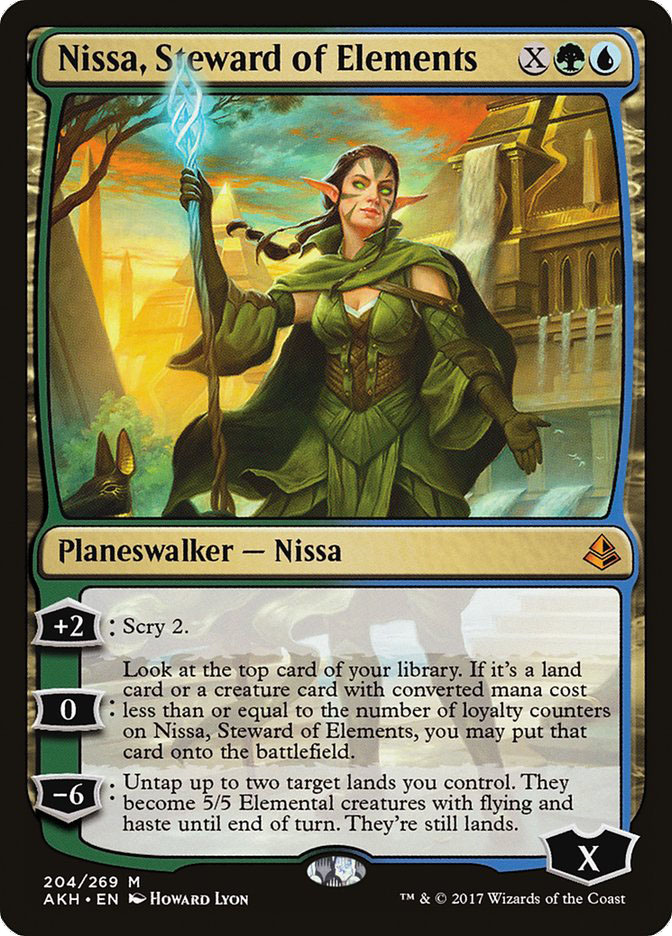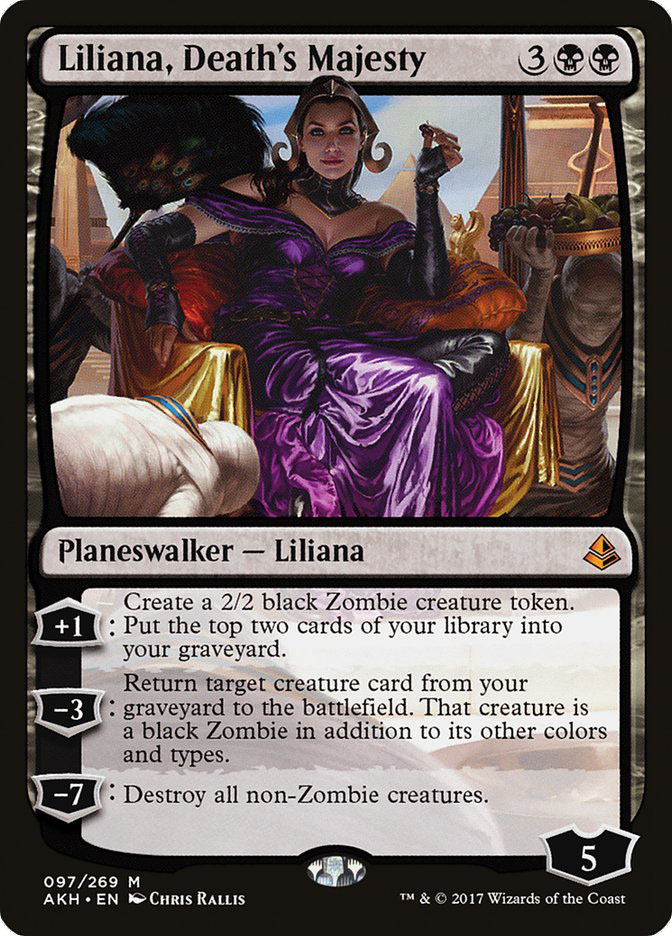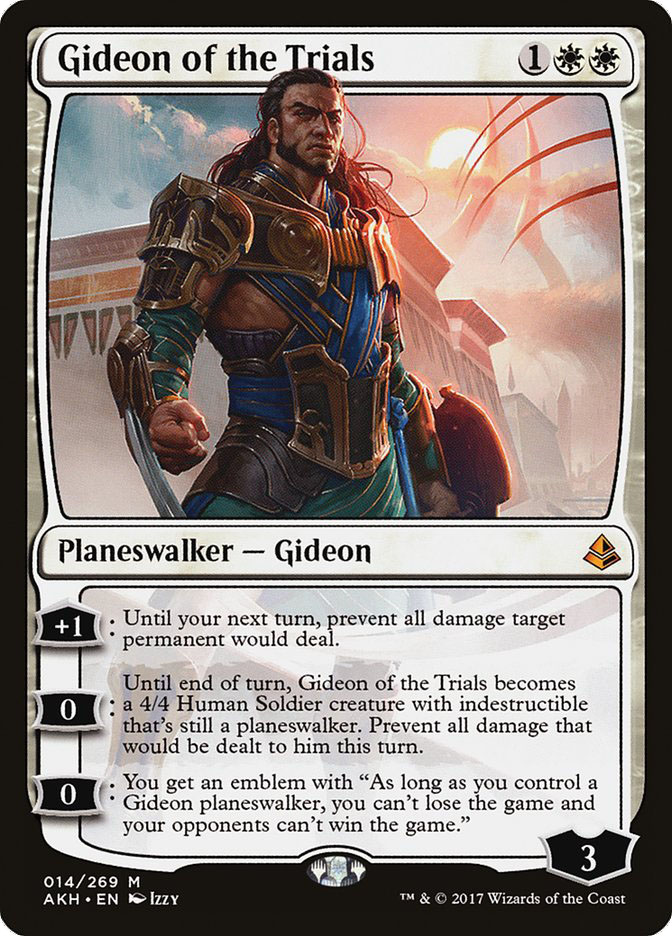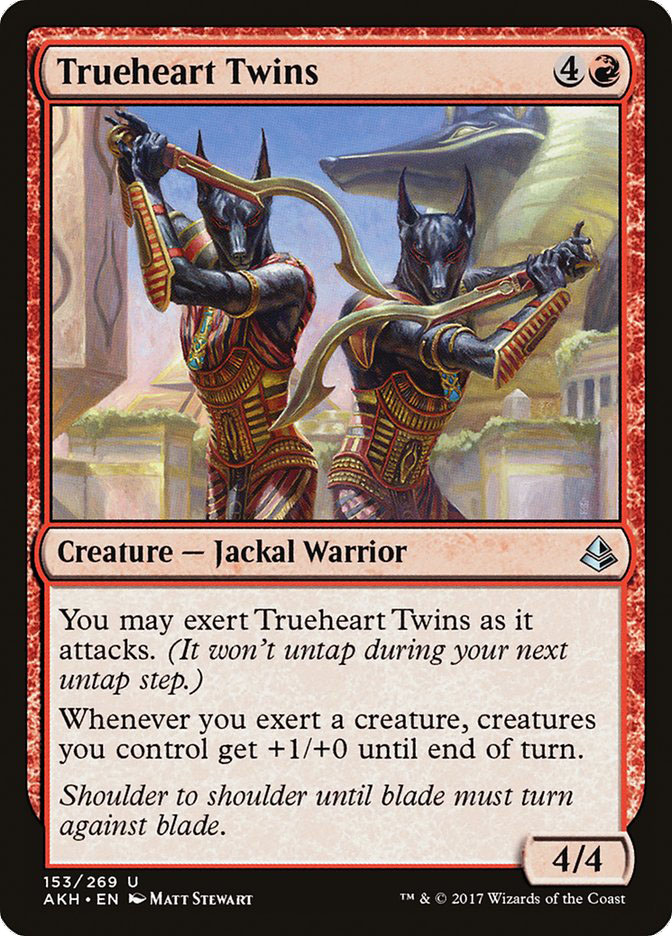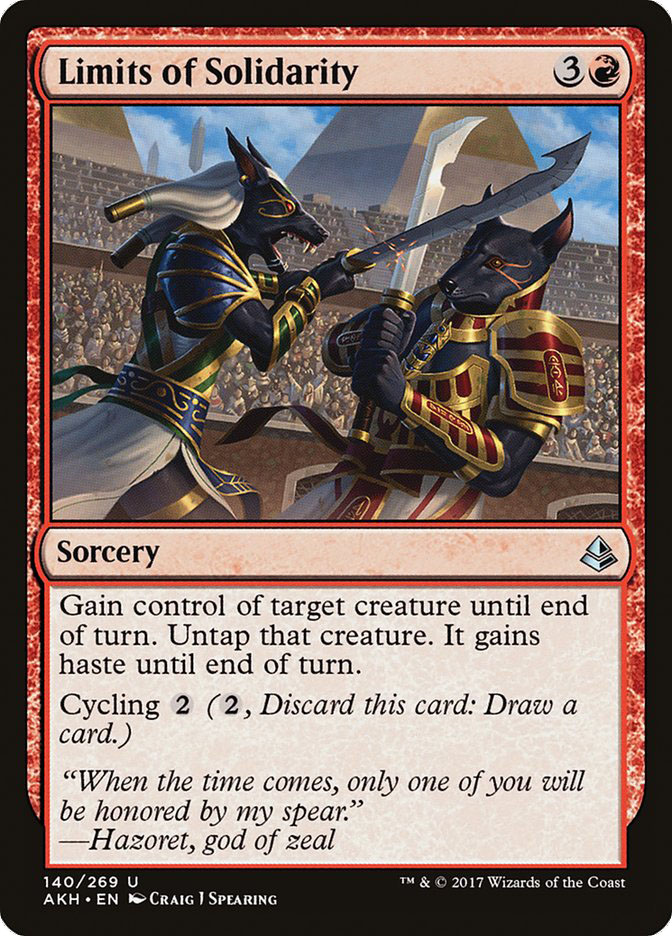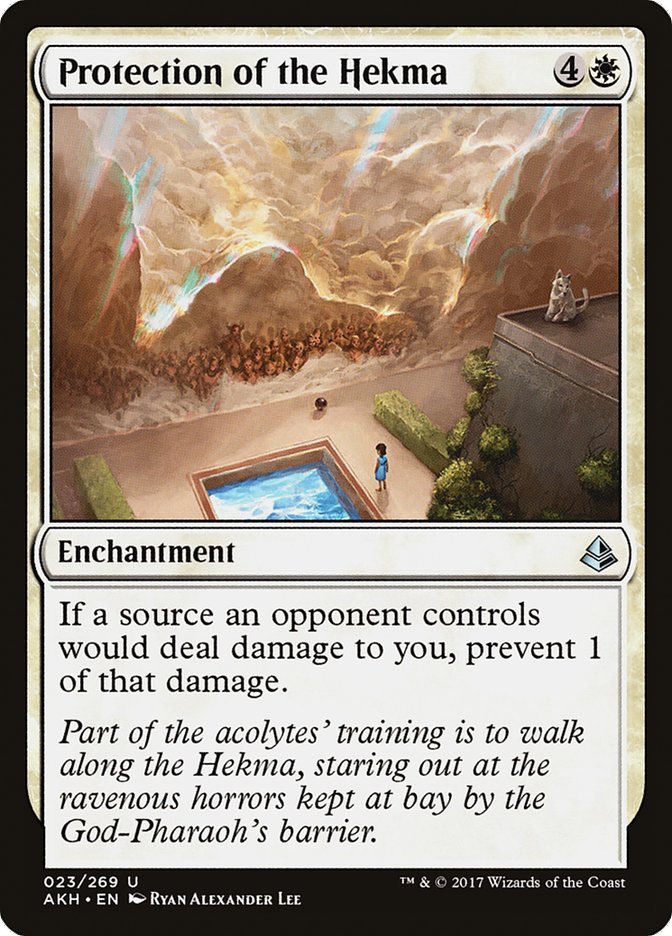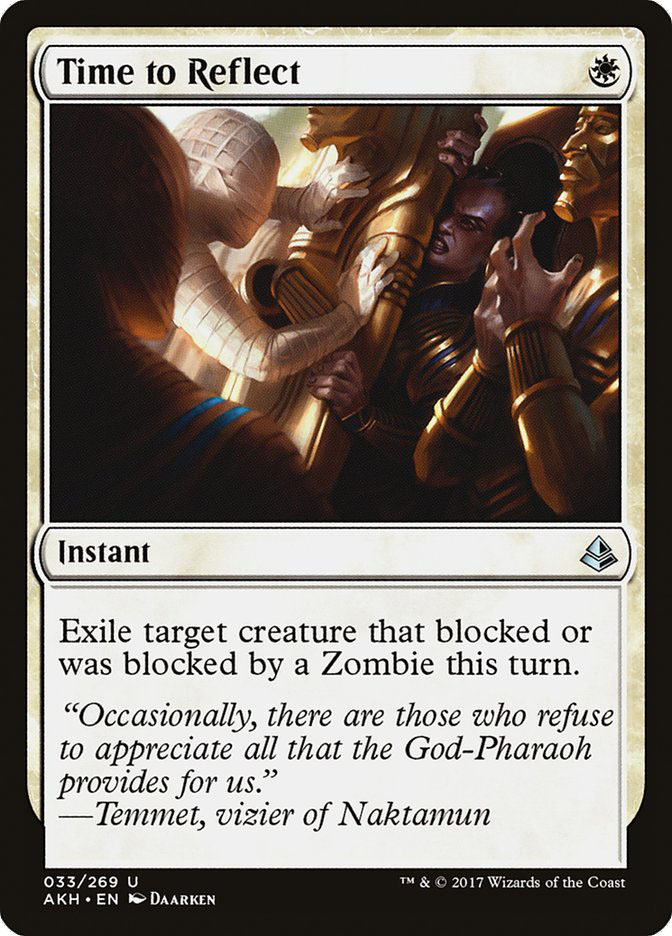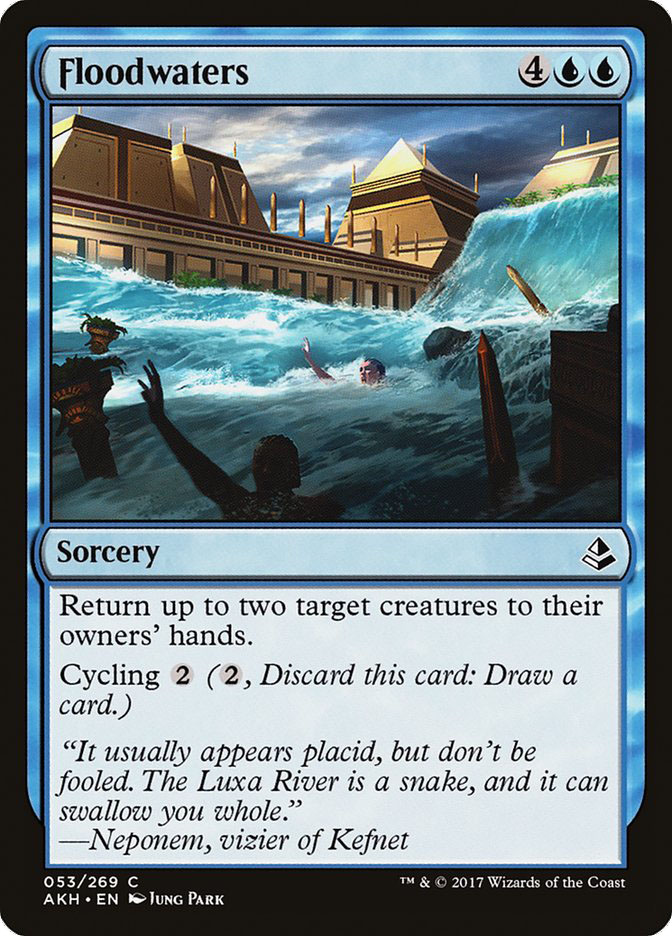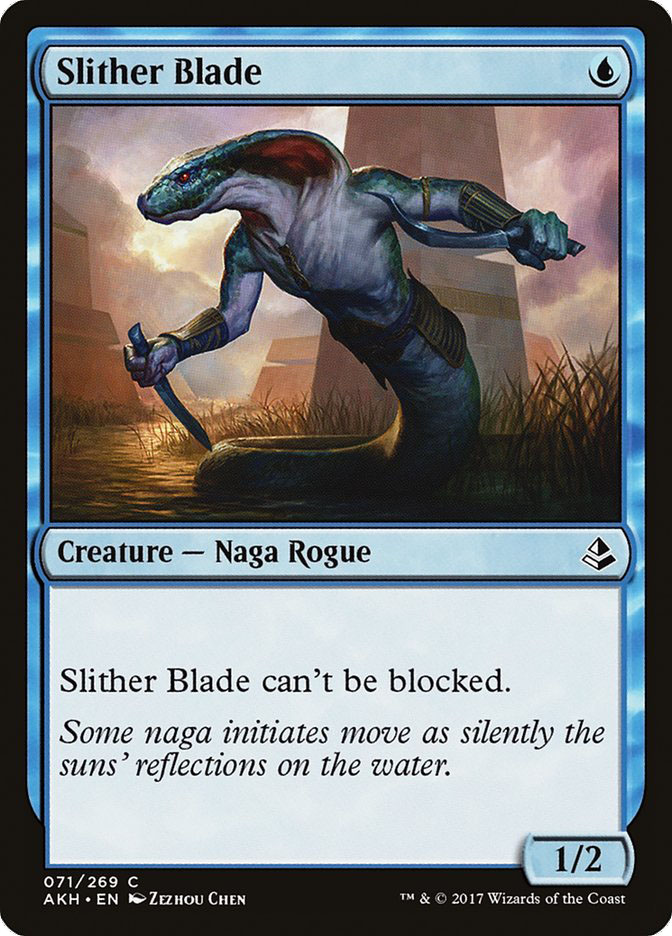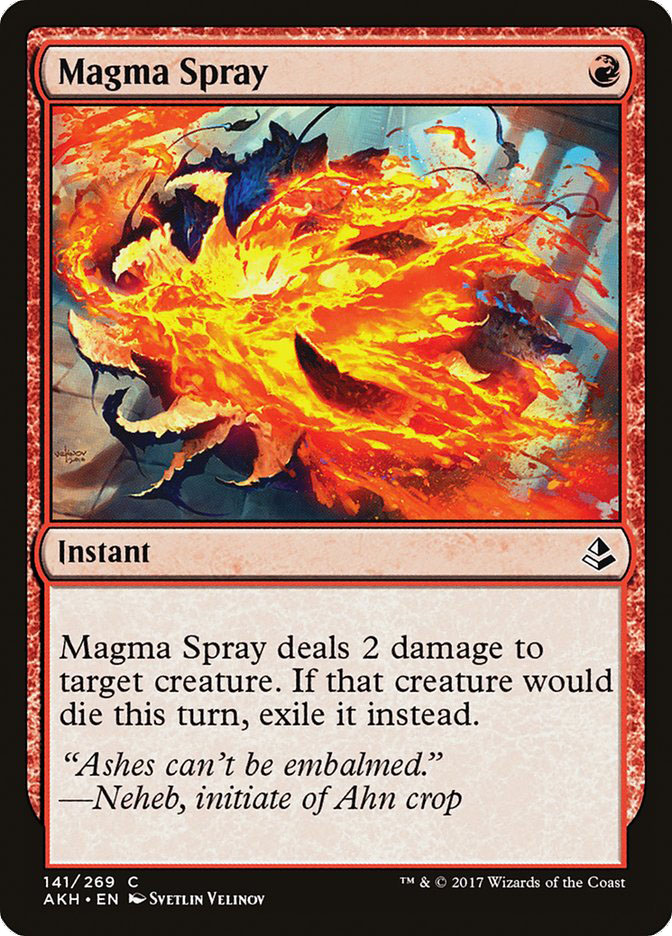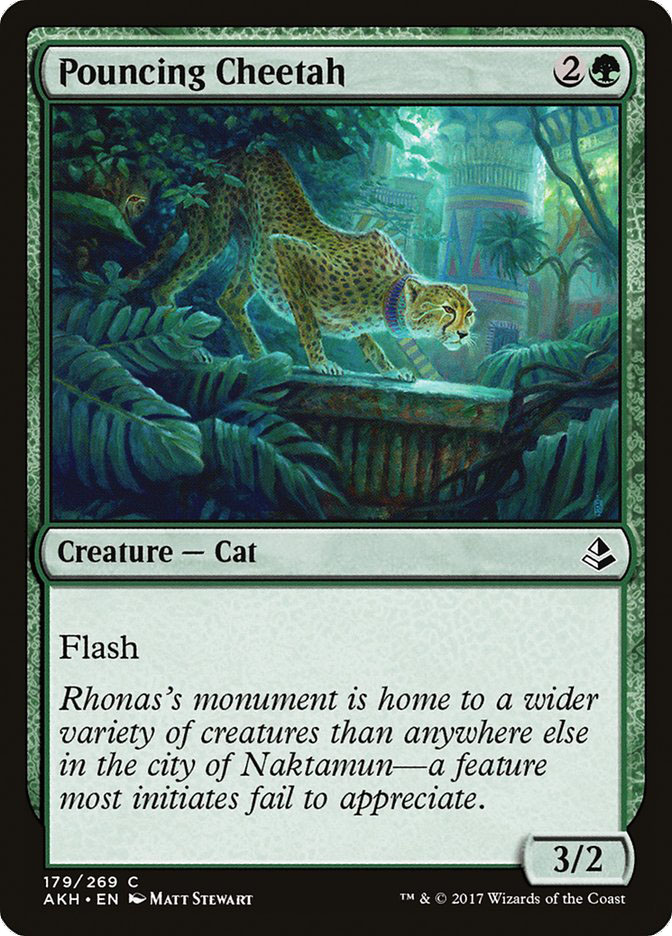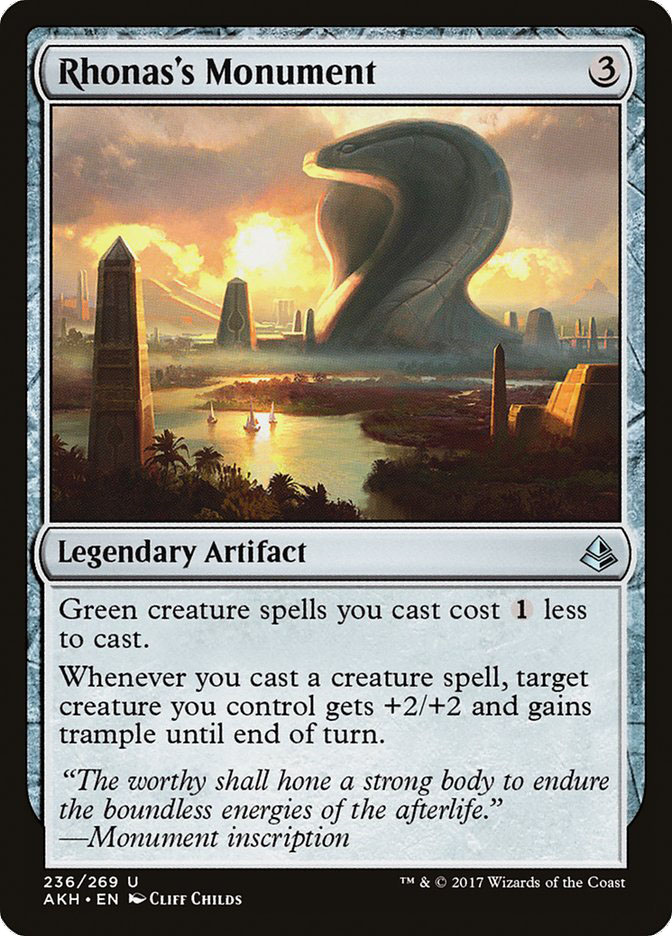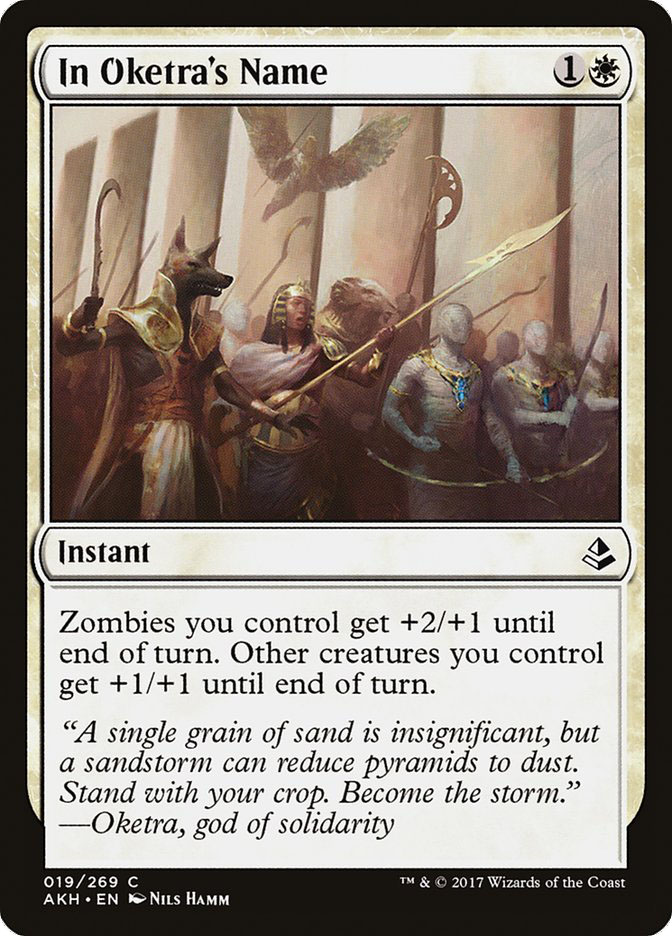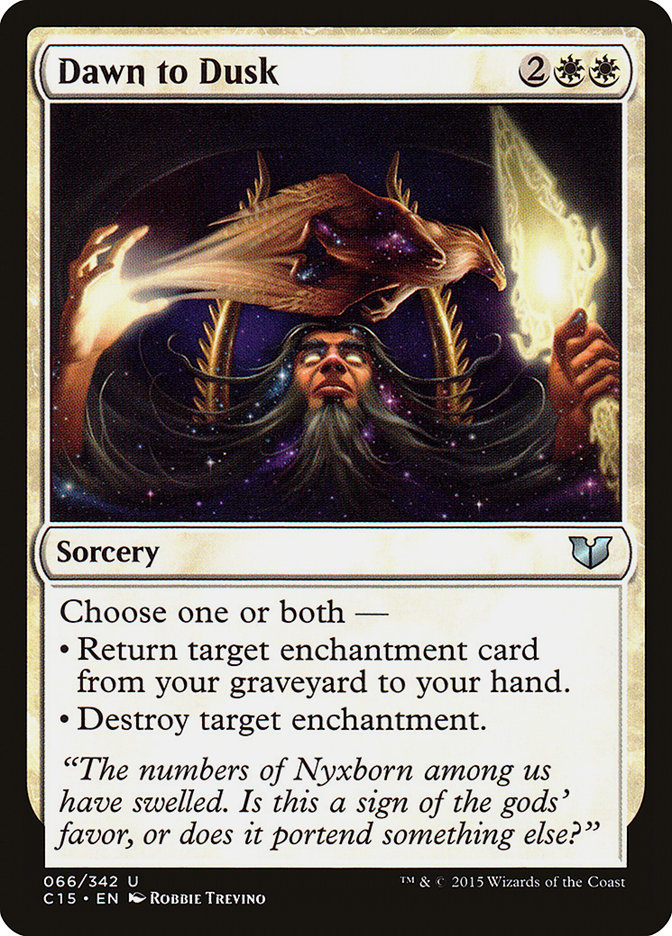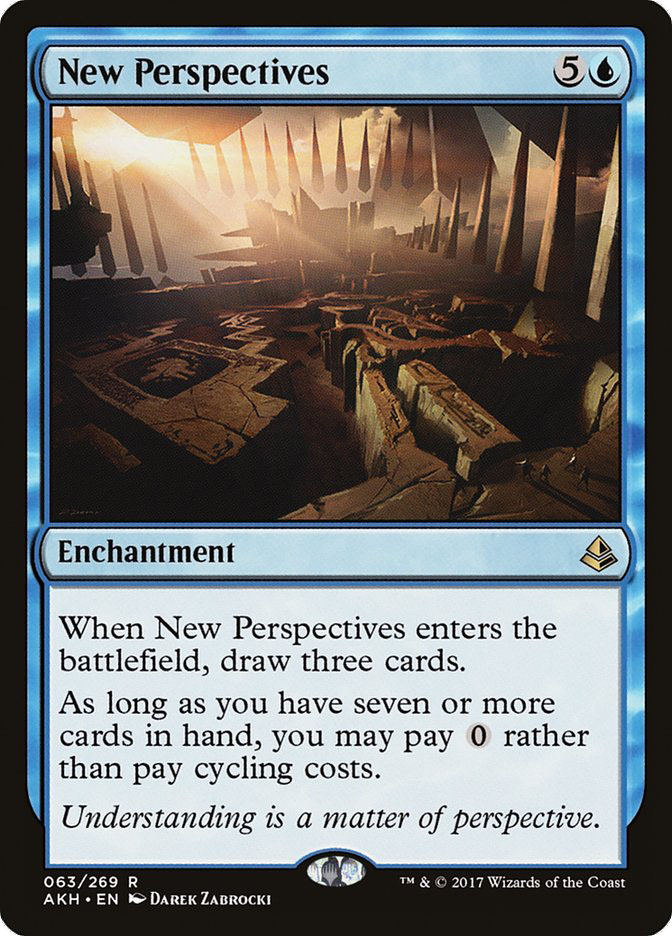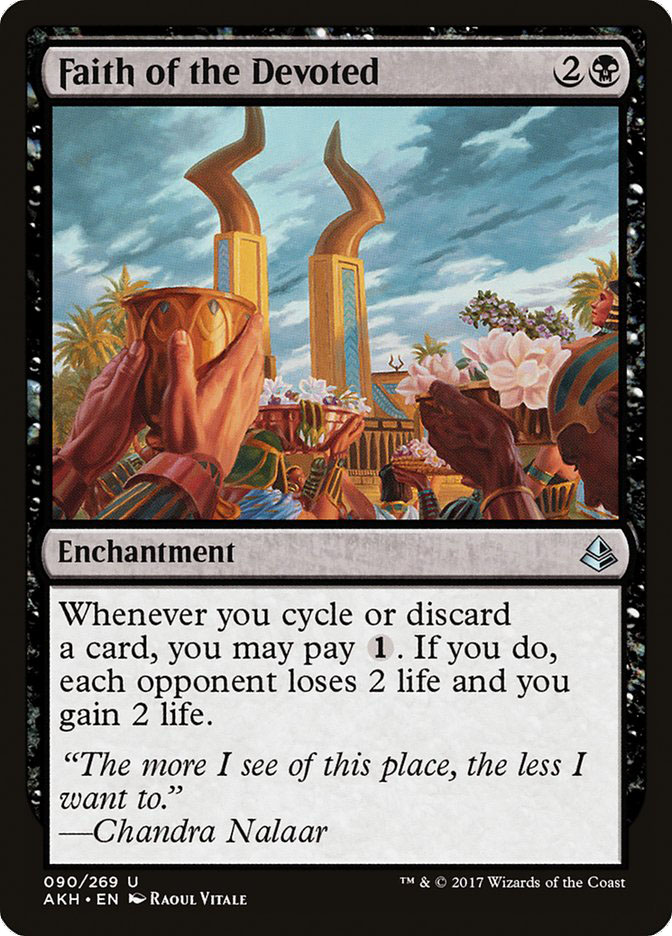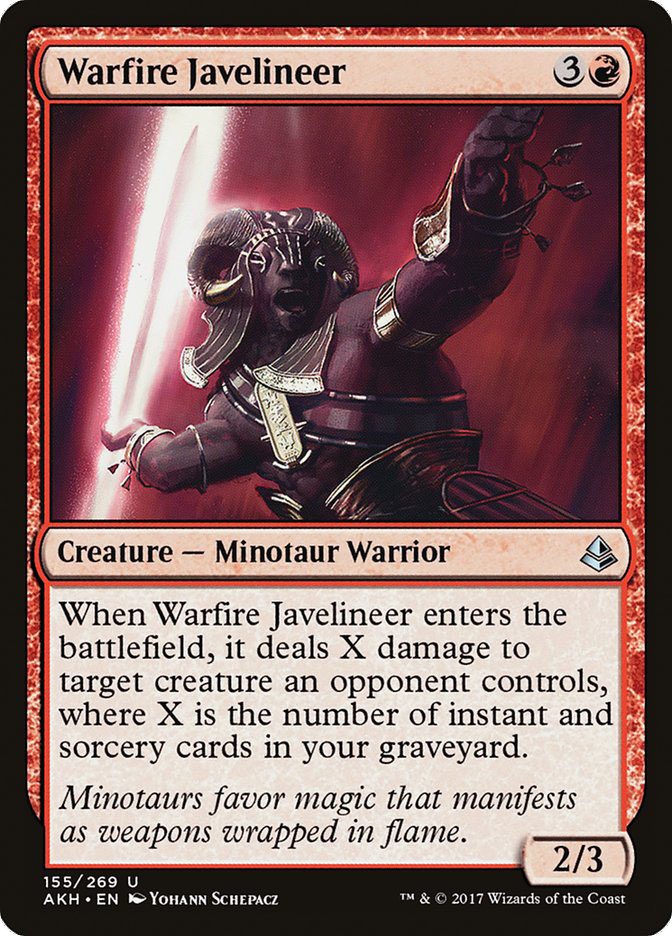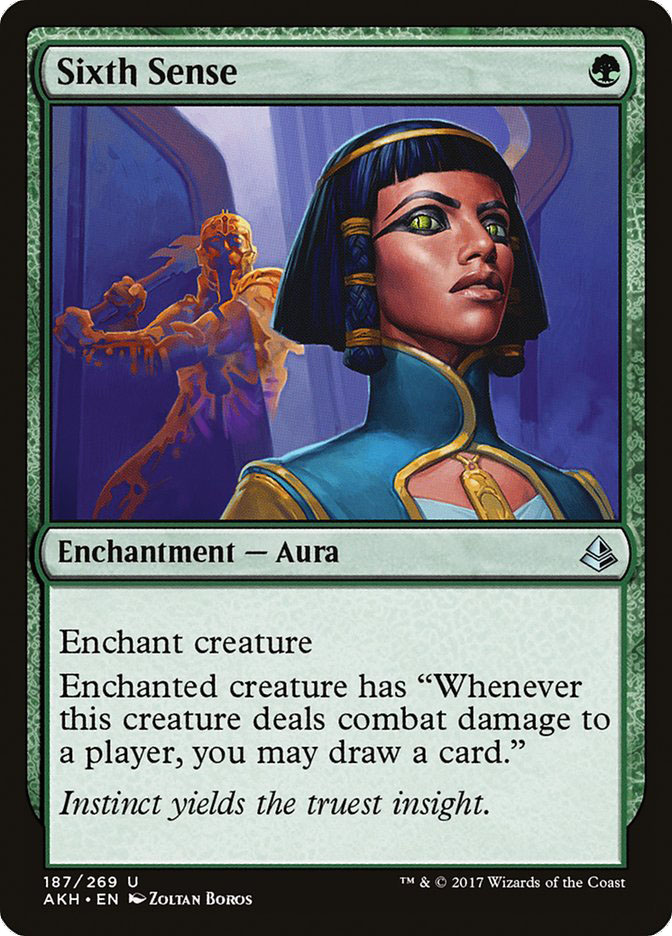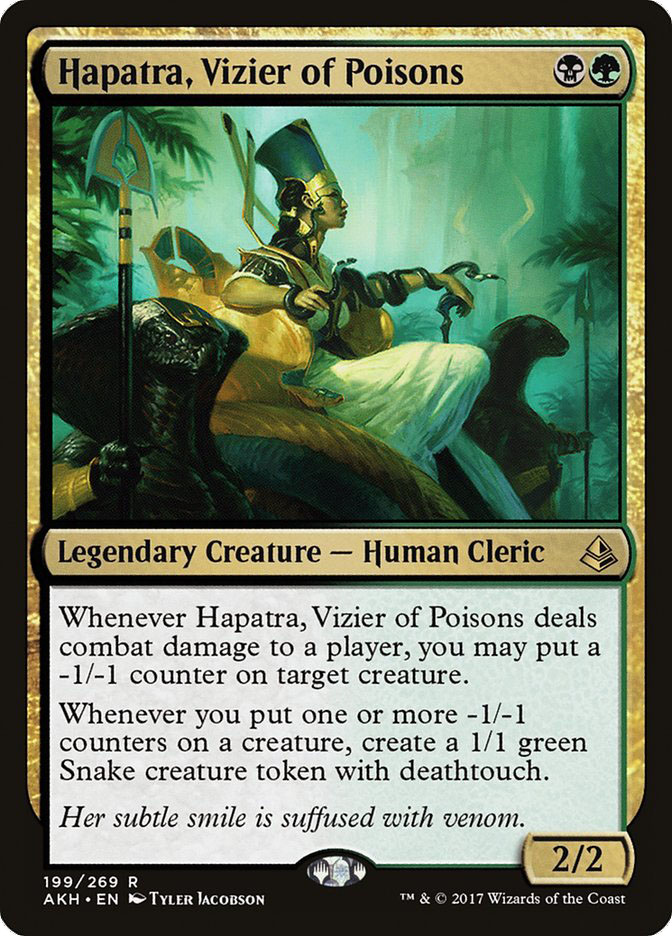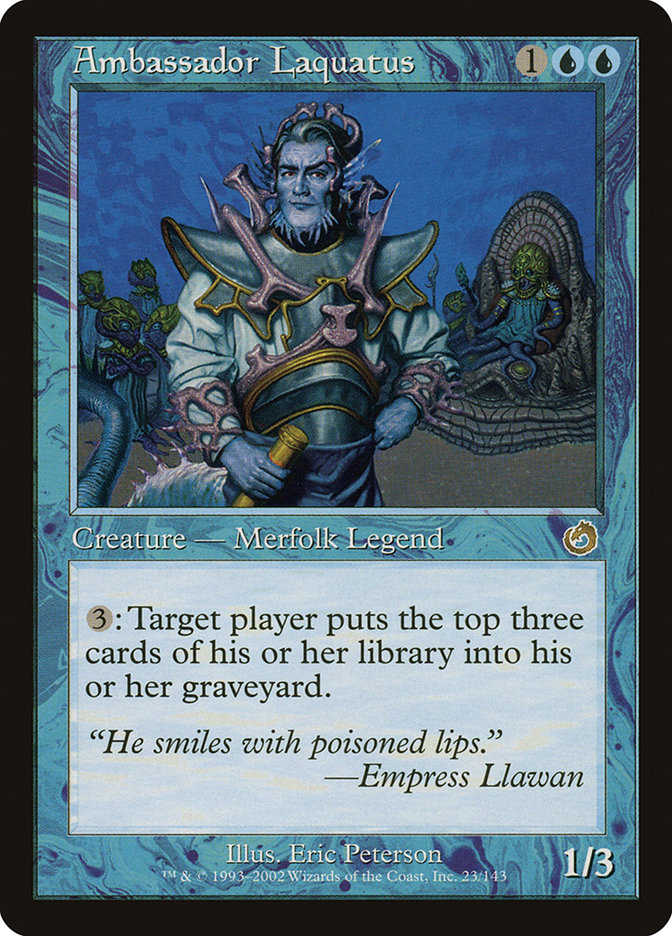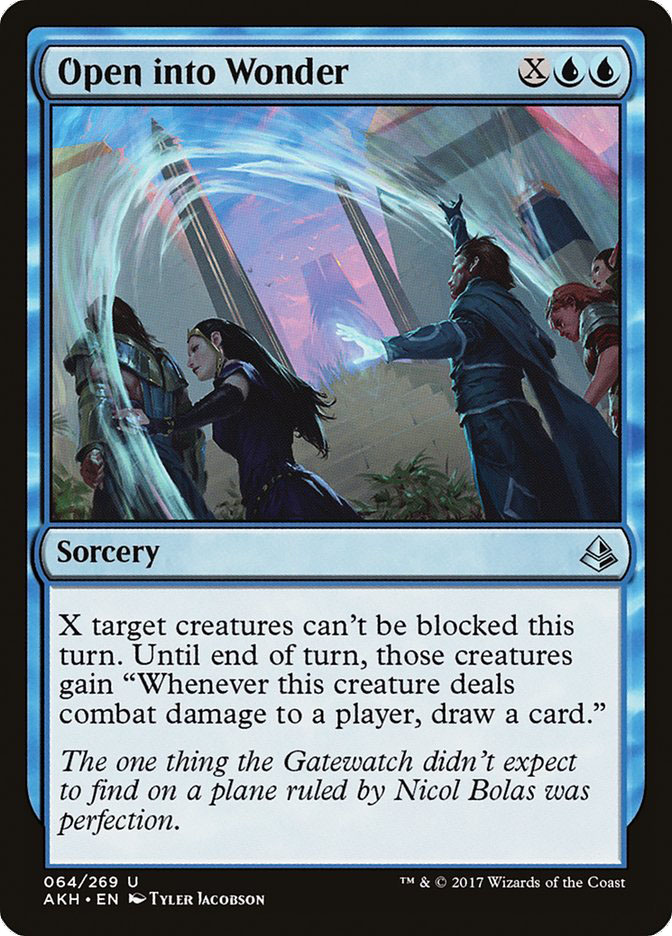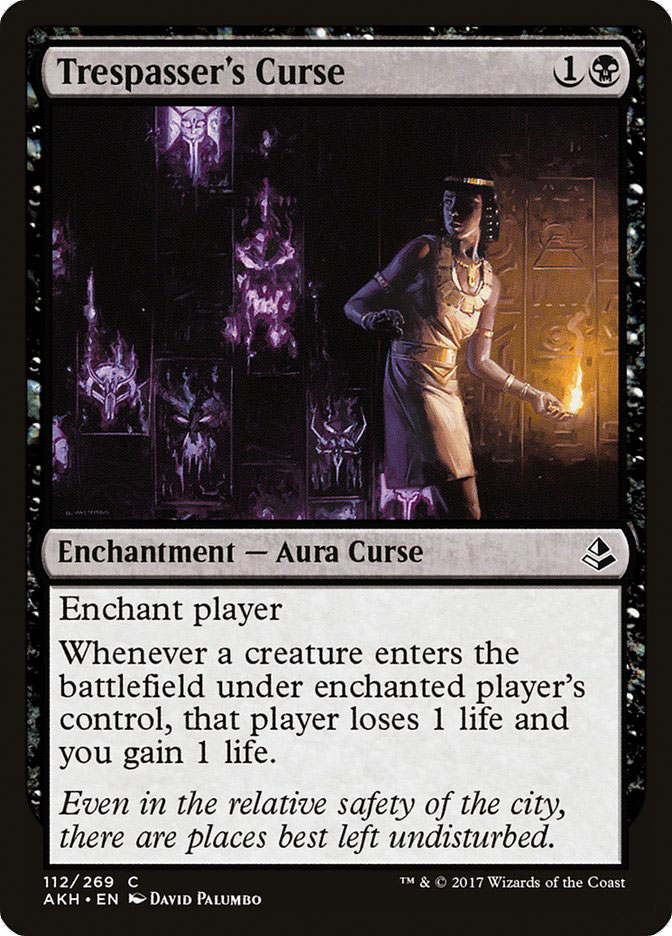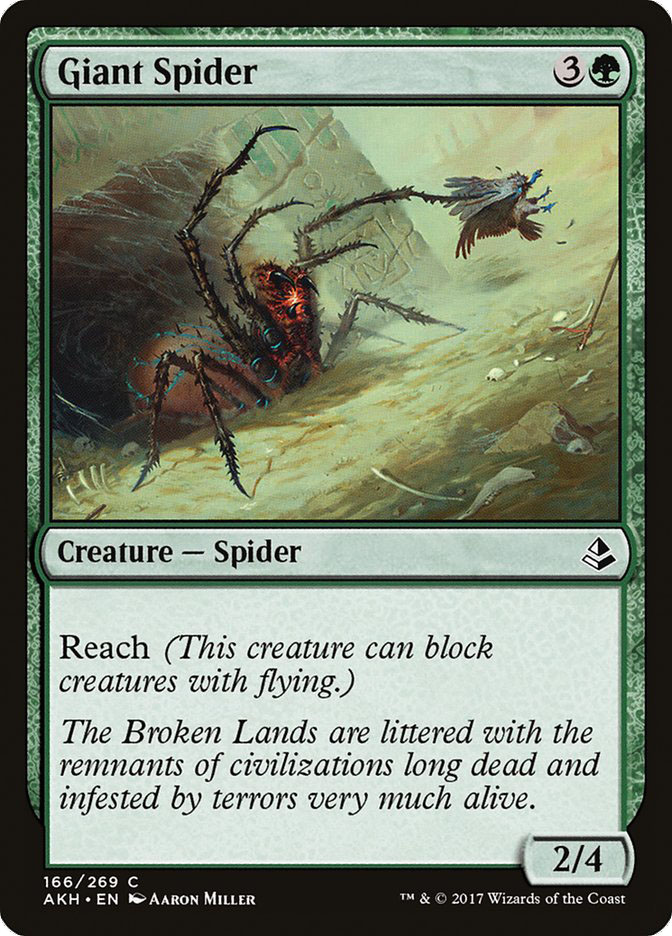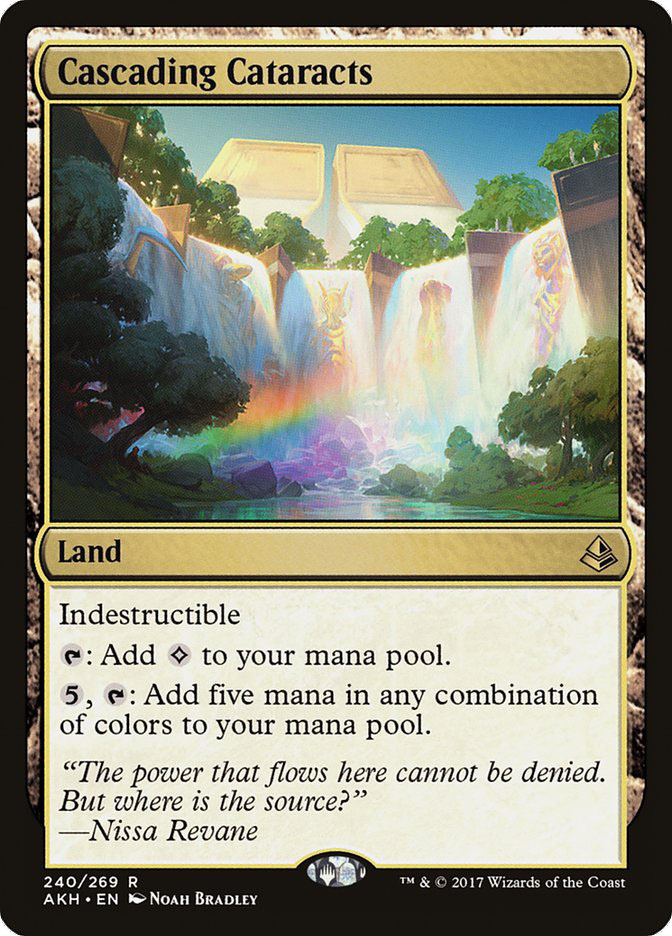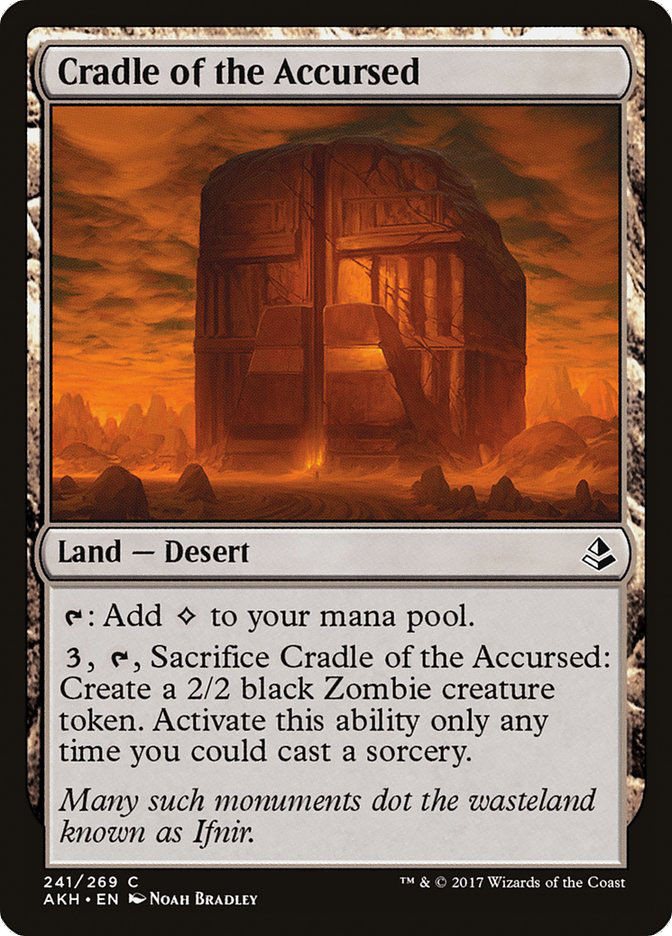All of Amonkhet has been revealed, ready for perusal and preorder. It’s a never-before-seen setting with plenty of nuances to unpack, but before I get to that, I want to highlight a few people of particular Magic flavor relevance to follow on Twitter and elsewhere.
Three to Follow: Amonkhet Edition
Sonja Greer (@Rudjedet): The intersection of “Egyptologist” and “Magic nerd” doesn’t have a large population, but Sonja Greer is firmly in both camps…and a wonderfully funny online presence to boot. Without her insights, the significance of a number of character names would be totally lost on me.
Beck Holden (@beholdMTG): I’m not sure how Beck Holden stayed under my Vorthos radar for so long, but the “Scry Five” columnist at Hipsters of the Coast is definitely on it now! While we frequently disagree (and I know he’s not going to like some of what I’ll write later in this article), his blend of insight, clarity, and respect makes him a valuable resource and a worthwhile read.
Magic Art Show (@magicartshow): Ideally, the Magic Art Show, an exhibition of original paintings and preparatory work to be held at Grand Prix Las Vegas in June, will be fully funded by the time you read this. It’s one of the most important Vorthos community projects in years, if not the most important, and has the potential to reshape the Grand Prix experience in 2017 and beyond.
Five to Consider: Amonkhet Story Spotlight
As has been the norm since Kaladesh, there are five “Story Spotlight” cards in Amonkhet, though storyline elements are by no means restricted to these five cards.
On Renewed Faith, Gideon Jura beholds Oketra the True, one of the five Gods of Amonkhet present on the plane. Gideon, who comes from the plane of Theros (where two Gods, Heliod and Erebos, were in their own shares responsible for Gideon’s planeswalker spark igniting) and found his adult purpose on the Angel-infused former plane of Bant (now part of Alara), is hardwired to believe in the divine in a way no other Gatewatch member is, and so when Oketra saves him and his team, he wanders in search of Oketra, finds her, and becomes Gideon of the Trials as he joins the plane’s rites; Gideon of the Trials isn’t an official Story Spotlight card, but it’s an important part of the plot nonetheless.
Of course, Gideon’s dreams aren’t long for this world or any other in the Multiverse, because this is Magic, where faith betrays the faithful. (Seriously, Wizards…would it kill you to have some positive religious representation one of these days?) The Cruel Reality of an initiate murdering a peer gets Gideon thinking maybe Amonkhet isn’t all he thought it was.
Gideon’s disillusionment continues after an unspecified event that leaves a number of initiates dead. He concludes that, while the Gods of Amonkhet may be prominent, even everyday presences in the lives of the plane’s sapient beings, said Gods certainly are not benevolent.
Meanwhile, Chandra “Muh Freedom” Nalaar has discovered the creepy way Amonkhet deals with dissenters. She’s not happy with it, and (in typical Chandra fashion) she really doesn’t care who knows about it.
And in the grand Story Spotlight finale, Gideon shields…someone from Hazoret and that nasty-looking two-pronged spear. There’s no flavor text, so clues are scant as to what’s actually happening, but from the art, it’s clear Gideon is facing down a deity that would harm someone he cares about, and Gideon’s saying, “Not today!”
So what are we to make of these five cards? Beck Holden has already weighed in, and I think his argument is cleverly reasoned…and quite wrong. While I agree with him that the character Djeru depicted on Djeru’s Resolve is probably the same one seen getting his murder on in the illustration for Cruel Reality (significantly, the same artist, Kieran Yanner, is credited on both cards, which I’d expect Wizards to do if they wanted to keep a particular “look” for a character who isn’t called out in a style guide for storyline surprise reasons), on Gideon’s Intervention, all three of the Human figures depicted have long hair, while Djeru’s is short and shaved on the sides.
If Gideon isn’t intervening to save Djeru, who’s the lucky one? Based on hair, clothes, and By Force, I would say it’s Samut, Voice of Dissent if I had to make a guess, but that’s going out on a limb.
More significantly, Gideon’s doing something unusual for him on Gideon’s Intervention: he’s making a forcefield to shield others instead of simply making himself invulnerable. Is this something he’s known all along (in which case, why didn’t he shield his Irregulars back on Theros?) or is it something he improvises in the moment, projecting his invulnerability magic outward? If the latter, is this new trick something he’ll use to grow even stronger…or a tremendously exhausting effort that will lead to his imperilment or possibly even death?
More for the Story
High above all the drama on the ground, the Second Sun of Amonkhet inches closer to its appointed place between the Horns of Bolas.
Threaded through various cards are excerpts from The Accounting of Hours, an in-universe work of prophecy.
The Hour of Revelation will answer all questions. The Hour of Glory will bring a test for the sapient life and Gods of the plane to “prove their worth.” In the Hour of Promise, the God-Pharaoh (read: Nicol Bolas) will tear down the protective barrier of the city. The Hour of Eternity will bring “the worthy” to a place at the God-Pharaoh’s side.
Blue. Red. White. Green. What’s missing?
One color, and one hour: black, and the Hour of Devastation.
Everything’s being set up for Nicol Bolas to check in on his pet plane (remember Dark Intimations from Aether Revolt?), and while it’d be tremendously amusing to have Bolas not return at the appointed time (and what’s with the second sun anyway…is it like a “distance to Bolas”-meter?), I don’t think the trolling game at Wizards of the Coast is quite to that level.
Nicol Bolas has already told the people of Amonkhet what’s going to happen. The only question left is whether the Gatewatch will figure out the script in time.
New Artists
Mark Behm: This North Carolina illustrator is fairly quiet online, but his first Magic illustration has every chance of raising his profile.
Mike Burns: For some artists, a first commission for Magic is merely a stepping stone. For others, it’s a dream come true. For Mike Burns, a longtime Magic fan and alterist who posted on Reddit with obvious joy and pride when his first card was revealed, it’s clearly the latter case.
Adrian Majkrzak: This concept artist from Washington State already has some big names on his CV, and this three-pack of images showcases his versatility.
Grzegorz Rutkowski: Not quite “never-before-seen” (he did the FNM promo for Fortune’s Favor), the Polish illustrator makes his regular-set debut with Amonkhet. In addition to the above cards, he also earned the Game Day promo version of Glorybringer, a remarkable (and remarkably rapid) rise.
More Art Notes
Between fifteen Embalm tokens, one for each Embalm card, and fifteen additional illustrations for the Aftermath cards, that’s a total of 30 more artworks for the set than usual. Some budgets got stretched for this one! Also stretched: the Aftermath art, which is in extreme landscape proportions compared to Magic’s usual.
Some artists used these extreme proportions to their advantage, such as Noah Bradley on Dusk//Dawn and Zack Stella on Prepare//Fight. Magali Villeneuve had less luck on the “Start” side of Start//Finish, where the two Warrior figures are dwarfed by the environment to the left and right.
This is quietly one of the best basic land illustrations in years, sun-drenched and distinctive. And yes, the original painting’s been sold already. I asked as soon as I saw it, and was too late.
On another art note, the plane of Amonkhet is so sun-drenched that even the Swamps don’t seem too menacing…
…unless there are Bolas horns involved.
Howard Lyon landed his first planeswalker card, his only contribution to the set. In contrast to most other planeswalker presentations, here the background is of nearly equal interest to Nissa herself. The prominence of the river landscape underlines her shift to add blue to her innate green color identity.
There’s a great deal of wit to this Shreya Shetty piece. Put a Human in there holding the seedling, and it’s an ordinary work; make it a mummy, and the feel is almost Surrealist, with only the Amonkhet inscriptions keeping it from full Surrealism.
The Chris Rallis illustration for Liliana, Death’s Majesty looks better (and less confusing) in its cropped version, which highlights how Liliana isn’t changing her appearance or her clothes for anyone or any plane…
…unlike Gideon of the Trials, who’s switched up his style to have partially exposed flanks and (more clearly seen on Gideon’s Intervention) a kilt for his usual pants.
Names and Flavor Text
I don’t know if these two are specifically meant to be connected, but if Hazoret’s telling twins to fight each other to the death, that’s wrong with a side of wrong sauce.
While The Accounting of the Hours tries to evoke the sounds and rhythms of religious texts, Djeru’s Resolve effortlessly sounds like a verse from one such work. A little typographical switchup would’ve made it even more effective:
When I wish to be strong, I train.
When I wish to be wise, I study.
When I wish to rest, I start again.
The Logan’s Run–like environment of Amonkhet, with only a few older viziers who have left the cycle of “train – do the Trials – die young one way or the other,” is a bubble of life in a vast surrounding wasteland, an oasis that is also a prison nobody can leave successfully.
In Amonkhet, mummies walk about freely while the (dissenting) living are sealed in sarcophagi. This perversion of Egyptian funerary rites is a sign of how Nicol Bolas has warped the plane’s culture.
Those who’ve lived on the banks of a river, as I did for parts of my youth, know how they can be life-giving yet unforgiving. The winding rhythms of this flavor text add marvelous menace.
Yes, there’s a missing word. No, it shouldn’t happen. Yes, it does, because people are human, and it’s been a while since Wit’s End.
Move over, Chandra. Neheb is the one true successor to Jaya Ballard.
This could’ve used a rewrite. It doesn’t “sound” red; it sounds like some stuffy nineteenth-century academic. Try this:
“Combat is my worship, the clash of steel my solemn prayer.”
— Pytamun, initiate of Nef crop
The allergy sufferers among us took one look at this card and said, “Serenity? As if!”
I like my humor dry as the Sahara, so it’s no surprise this one struck a chord with me.
I might be reading too much into this flavor text, but it sure seems suggestive of the Blind Eternities that face any future planeswalker. Perhaps the “Amonkhet as planeswalker farm” theory has merit?
Give Me a Break!
The reference to groups of initiates as “crops” (ominous much?) conflicts weirdly with the sandstorm metaphor. Why not speak instead of how a single seed is small and insignificant, but many can grow into a bounteous field?
This is why I don’t like WotC referring to Aftermath cards as “Dusk to Dawn” instead of just “Dusk//Dawn.”
The art is puzzling (what’s it trying to show?) and the flavor text utterly banal, especially with its repetition of “perspective.” A disappointment.
There’s a fine line between “playing on expectations to subvert them” and “making no sense.” Illustrations on black cards don’t have to be grimdark, but with only the Bolas-horns throne to convey menace (and that’s an easily missed clue for someone opening their first pack), the art is simply solemn and beautiful, which makes the Chandra quote seem even more nonsensical.
That’s supposed to be a Minotaur, I guess. And that flavor text? Banal, banal, banal.
If the flavor text is true…why train? This undercuts the message of the rest of the set.
This flavor text: been there, read that.
Well Played
It takes a real touch to include all five members of the Gatewatch in a single card illustration and yet have the focus be on the environment around them. Combined with the effective storytelling of the flavor text, this makes for one of my favorite cards of the set.
While the whole “tomb raiding” trope was something Wizards largely wanted to avoid, at least one glancing reference was inevitable. David Palumbo was the perfect illustrator to do it tastefully.
Welcome back, my old Core Set friend. I’ve missed you.
Noah Bradley is one of the best landscape illustrators in Magic, and he proves it set after set.
One Last Thing…
The Amonkhet Invocations? Still can’t read ’em.


